

10 Top producer in South Auckland 30 Chilly winter outlook 38 Trade deal with India? Keep the scheme working Page 8 VOL 97 | NO 05 | JUNE 2024 In this issue


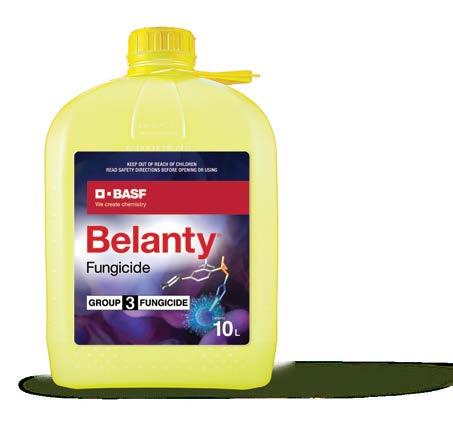


Class-leading, flexible control of powdery mildew in grapes A uniquely adaptable, next-generation Group 3 fungicide Superior performance helps produce superior results More adaptable to enzyme pocket mutations that cause sensitivity shifts in other DMIs Scan here for more information on Belanty® Fungicide, visit crop-solutions.basf.com.au or contact your local BASF representative on 1800 558 399 ALWAYS READ AND FOLLOW LABEL DIRECTIONS. © Copyright BASF 2024. ® Registered trademark of BASF. BASF0188.0424

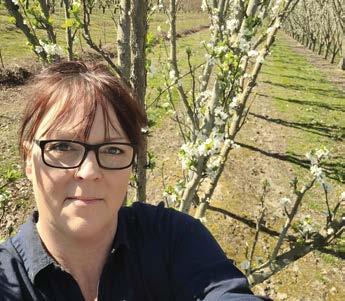

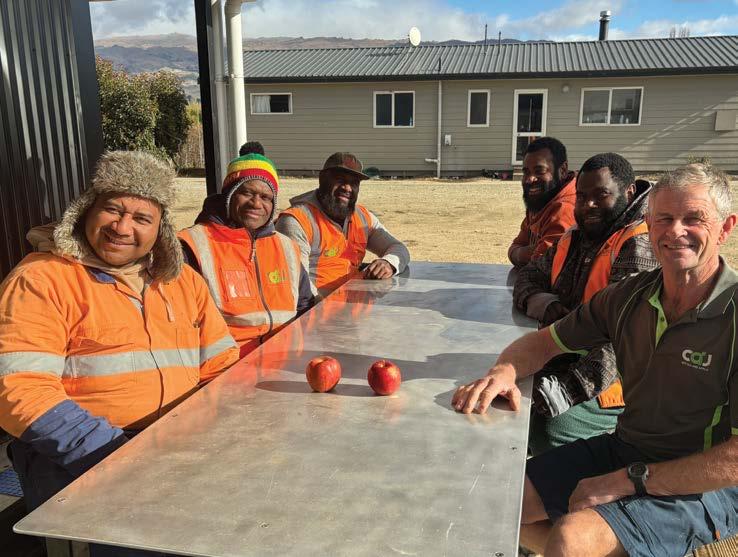

33 What’s new: Landini*



34 RSE resilience tested again 38 Securing trade deal with India not a simple feat 42 Two magazines in one FLIP to find more articles about
Horticulture needs your time
India connections: Three generations in Pukekohe
Biodynamics celebrated in Hawke’s Bay
24 The 25-year journey of NZGAP 21 Opportunity abounds in horticulture
* A regular advertorial section of new products and services. This publication does not endorse the products or services featured here.
Flip to find vegetables
This issue of The Orchardist offers you another perspective. Flip the magazine to see our sister publication about vegetables –NZGrower
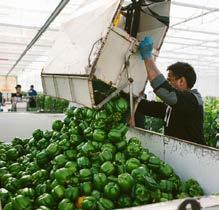

Contents JUNE 2024 35 16 21 10 Up Front 2 President’s Word: Cast your vote Fruit Growing 4 Skilled workforce needs to grow 8 Time to improve RSE scheme 10 Growing kiwifruit a golden opportunity 16 Helping growers with a seasonal Kiwi workforce 20 What’s new: ThermoMax* 21 Labour efficiency and effectiveness – creating labour precision Your Industry 27 Employing migrants –what you need to know 30 The outlook for winter
Your Industry 32
29
27
VOL NO05 JUNE2024 HORTICULTURENEWZEALAND VITALTEAM PLAYERS PAGE 8 4 TALLEY'SEXPANDSIN MIDCANTERBURY 21 YOUNGGROWERS EYEFUTURE 29 PUKEKOHE'SINDIAN CONNECTION The ORCHARDIST : JUNE 2024 1
HortNZ levy referendum: Cast your vote
Growers have to be good planners, it’s the nature of our industry, but recent years have brought unprecedented challenges, and there will inevitably be more to face in the years to come.
So, I encourage all of you to cast your vote in the Horticulture New Zealand levy referendum. A renewed levy would apply for six years from the expiry of the current levy in March 2025.
Voting closes shortly on 14 June. All growers should have received the proposal document and voting papers either by post or email – you can vote online or by post. If you haven’t received your voting papers, please let us know, there is still time to vote.
Barry O’Neil : HortNZ president
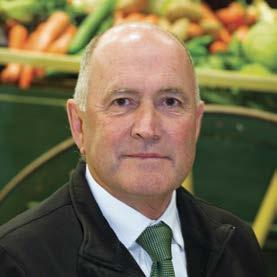
A ‘yes’ vote from the country’s growers will provide HortNZ with a mandate to continue to take the lead on national issues impacting growing fruit and vegetables, support us to address and manage challenges on growers’ behalf and work to get the best outcomes for the sector.
If HortNZ doesn’t get that support, we will be forced to wind-up, and the sector would lose the united strong voice on the big issues impacting horticulture.
Acting Editor: John Gauldie
That united voice will be especially important as the industry navigates change – expected and unexpected.
So, if you haven’t voted yet, please do pick up that voting pack and make your vote count when it comes to the future of your industry good body.
I am really proud of what the HortNZ team has achieved over the last six years.
During our recent grower meetings, it was very good to be able to meet many fellow growers and hear first-hand what they want us to focus on for the next six years. The issues raised were closely aligned to what we had identified in our strategy and within that, the three priorities of water, climate, and food security/right to grow.
Another focus over the next six years will be collaboration. HortNZ is committed to working closely with product groups to ensure we are not duplicating the work we all do to support growers.
Email: editor@hortnz.co.nz
Advertising Manager: Jackie Enright
Ph: 04 494 9986
Mobile: 0274 489 913
Email: jackie.enright@hortnz.co.nz
Design:
Scenario.co.nz
Ph: 04 385 9766
Email: joy@scenario.co.nz
Subscriptions: Email: info@hortnz.co.nz
This publication uses vegetable based inks and environmentally responsible paper produced from Forest Stewardship Council® (FSC®) certified, Mixed Source pulp from Responsible Sources.
Paper produced using Elemental Chlorine Free (ECF) and manufactured under the strict ISO14001 Environmental Management System.
The wrapper we use is 100% recyclable, it is LDPE 4 (Low Density Polyethylene) Soft Plastic and meets the required standards. For further information refer to: https://www.recycling.kiwi.nz/our-story
2 The ORCHARDIST : JUNE 2024 PRESIDENT’S WORD
HortNZ is committed to working closely with product groups
Crop specific marketing and product specific research and development is the responsibility of product groups, however when an issue affects the whole industry, HortNZ takes a strong leadership role and advocates on behalf of all growers.
To me, the start of this process is being absolutely clear on roles and responsibilities – who must be doing what – which the current levy round and conversations have helped progress. The bottom line to me is only by working together, will we succeed and achieve better outcomes for all growers.
A
united voice will be especially important as the industry navigates change – expected and unexpected
You will likely have read that chief executive Nadine Tunley will be leaving HortNZ at the end of August. She has done a fantastic job leading the organisation. We will be working to appoint another excellent leader, focused on delivering the priorities.
Lastly, I hope you are enjoying this first trial issue of the combined NZGrower and The Orchardist been looking forward to the new format and reading all the engaging and informative articles across the commercial fruit and vegetable spectrum. Kia kaha.
Voting closes 14 June
All growers should have received the proposal document and voting papers either by post or email. www.hortnz.co.nz/ commodity-levy
Flip for chief executive’s column
You can find HortNZ’s chief executive’s column on the opposite side of the magazine.
Let’s plan for future planting together
Redeveloping an orchard and getting trees in the ground is no easy feat. That’s why we’re supporting local growers and New Zealand’s pip fruit expansion with marketleading and consistently performing trees. Reach out today and join our family of
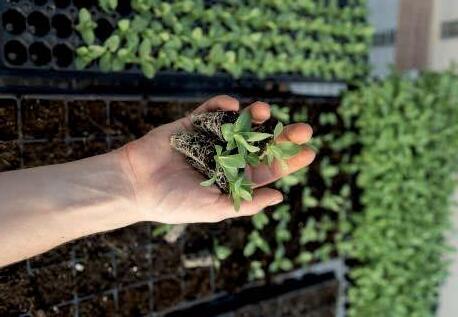
Apples • Apricots
Plums • Peaches • Cherries Nectarines • Pears • Rootstock SPECIALIST VARIETIES AVAILABLE
Join our family tree
sales@gnl.nz 027 656 5023
Enquire today

Skilled workforce needs to grow
If the horticulture industry is to reach its aspirational goal of doubling farmgate revenue, it is going to need a skilled workforce to do the job, which is already in short supply.
Anne Hardie
Rob Holtham is orchard manager at Willisbrook Orchards on Tasman’s Waimea Plains and says finding skilled staff or potential employees who want to learn skills is challenging at orchard level.
He says there is a wall of expectation around the industry to reach its goal and more capital from outside the industry will
increase the crop, along with technology to improve crops. That means more skilled labour and he worries the industry is about to spread those skills more thinly.
“There’s an appetite to invest more capital into horticulture and what does that do to the labour pool? It just dilutes it. Because where does the skilled labour come from?”
It is not the seasonal workforce he is talking about, but the permanent employees in horticulture who need the skills to spray the crop effectively, manage growth, take charge of quality control at harvest and manage people.
“You might have the bums on seats, but I’m talking about skills and that takes time and willingness.”
At Willisbrook Orchards, which grows apples and kiwifruit, he has a team of 15 permanent staff and up to 60 during
Online
Supplies Call
www.irrigationexpress.co.nz 4 The ORCHARDIST : JUNE 2024 FRUIT GROWING
Rob Holtham says finding skilled staff or people who want to learn skills is challenging
Orchard Irrigation
our experts 0800 130 905
EMERGING LEADERS TRAINING
A professional development opportunity for emerging leaders. A 12-week course specifically designed for team leaders, supervisors and 2ICs in the horticulture industry.
The course will focus on increasing self-awareness, leadership confidence, emotional intelligence, how to build trust and high-performing teams. It includes face-to-face and online workshops, personal coaching sessions and remote learning (for those unable to attend face-to-face workshops, there is an option to join online).
Follow the QR code link for more information and to register.
Start dates and locations:
Hawke’s Bay and Gisborne Monday, 17 June
Pukekohe Monday, 8 July Bay of Plenty Monday, 12 August
Nelson
Monday, 16 September
the apple and kiwifruit harvest. He is always looking for opportunities for staff to upskill and to find the right people with the willingness and flair to go further.
“The ones that can do quality control and supervision are gold. But there’s not enough of those to go around.
“There’s always the opportunities for people, but are they the right people?”
Now, the orchard has split quality control from a supervisor’s role, which adds another role into the cost structure, but creates two different roles to suit different people. It means a supervisor now oversees a gang of


about 16 workers instead of 12 in the past but concentrates on people. Whereas the quality control role is purely focused on the fruit.
As an industry, we have to keep on doing what we can to enhance the skill set of the labour
“As long as the QC and supervisor work together, it works well. In some ways it improved the performance.”
FOR TENDER
TENDERS CLOSE – 30TH JUNE 2024 Tender Documents available from H F Law Nelson Full specification Orchard Elevating platform In NEW condition & excellent working order whitney@hflaw.co.nz 0212208840 • Front & Rear elevators / platform rollers / Compressor & 4 outlets • 4 wheel drive & steering / Autosteer / Cruise control / 3m lift • Slope levelling / 1.6m – 2.6 mwidth / Road lights / 26hp Kubota engine
BAB TROY ORCHARD PLATFORM
View
Machine at 30 Hau Road Motueka
The ORCHARDIST : JUNE 2024 5 FRUIT GROWING
There are not enough people coming through for the numbers that will be needed to get a quality export crop in an expanding industry
Rob Holtham

While technology will contribute to crop management and harvest, Rob says skilled staff with knowledge on the ground will be needed to interpretate what is going on in the orchard or garden on a daily basis to use that technology best.
“It’s not about what is going right, it’s about what is going wrong and that comes back to skills and interpretation.
“Technology, AI and data all depend on who is driving it and there are also commercial interests that will influence it.”
Rob says Covid-19 had an impact on available skills in the horticulture industry because there was increased pressure at the coal face and he believes that drove some people away. Replacing them is harder, especially when many young people want to start higher up the chain rather than learning the crucial skills on the ground.
Though there are cadets and other training programmes, he says there are not enough people coming through for the numbers that will be needed to get a quality export crop in an expanding industry.
“There’s an increasing need for quality and market access and all those expectations, and I don’t think the skills are there, or the training beefy enough to meet those expectations.”
To use spraying as an example, he says you need skilled staff to ensure a crop is not over-sprayed or under-sprayed to get it right for export market quality and trade barriers.
The industry has to attract people, train them and retain them, which is already challenging. Yet more will be needed as the pressure increases in the industry. He suspects growers/companies will have to pay more to lure or retain skilled staff.
It’s not about what is going right, it’s about what is going wrong and that comes back to skills and interpretation
“As an industry, we need to work harder on the training and ask the question, is the training suitable and how can we enhance training to get people more engaged with what they’re doing.”
He would like to see the industry organise more off-farm visits for trainees to other horticulture properties to see what others are doing and get them more engaged with the industry. It will require more investment within the industry to increase its skilled labour force to meet the challenge of not just growing the industry’s revenue, but retaining what it has now, he says.
“As an industry, we have to keep on doing what we can to enhance the skill set of the labour.”
6 The ORCHARDIST : JUNE 2024 FRUIT GROWING
GEARING UP FOR GREATER GAINS




You called for enhanced hardware and smarter technology to help boost your operation. We’ve answered with a holistic solution purpose-built for orchards and vineyards.
Our new 5ML tractor brings you unprecedented power and narrow axles for tight spaces. Reduce mistakes and the need for extra hands with GUSS (Global Unmanned Spray System): a semi-autonomous sprayer that self-manoeuvres through rows. And save money by cutting down on unnecessary spraying with Smart Apply: a LiDAR spray system that targets only the canopy.
Greater gains are there for the picking.
Talk to your local John Deere dealer, today.
APPLE AND PEARS UPDATE
Time to improve RSE scheme
Karen Morrish : NZ Apples and Pears chief executive
The Recognised Seasonal Employer (RSE) scheme is an integral component of our nation’s pipfruit industry.
Our apple and pear growers employ a large portion of the people coming to New Zealand on the scheme, and it is a legacy that our industry is immensely proud of.
The scheme has critical benefits to both Pacific nations and growers and is a truly reciprocal relationship. We know the scheme works and works well, but we know that after 17 years it is time to make some improvements. Current settings show an imbalance, and without improvements growers will continue to face increasing challenges and the symbiotic nature of the RSE scheme could be lost.
The RSE scheme now doesn’t reflect the conditions of the day
RSE workers send home more than NZ$116 million in earnings a year. This income has built homes, sent children to school, covered life-saving medical treatments, enabled villages to access fresh water and been fed into local Pacific economies.
Our partnership with the Pacific has also helped our own primary industry to grow and thrive, boosting regional economies and maximising New Zealand’s exports. It has enabled the pipfruit industry to grow to achieve an annual return of almost $900 million in export earnings.
Yet, the RSE scheme now doesn’t reflect the conditions of the day and we need to ensure fairness for all partners. Costs continue to increase across the board for our growers and this needs to be acknowledged, while still ensuring the scheme remains a valuable option for our Pacific neighbours.
Supporting immigration and employment for the industry is a must as we face ongoing and chronic
$900m pipfruit export earnings per year

$116m earnings sent home by RSE workers every year
labour shortages. Horticulture is a rewarding career with opportunities in technology, research and commerce but we need a regulatory environment to support employment in our industry.
To assist, the National Labour Governance Group has been reestablished, which is a positive step forward for the industry (and wider horticulture), to allow for preparedness and ensuring it is a united voice that champions the legislative and policy setting changes we need.
Supporting immigration and employment for the industry is a must as we face ongoing and chronic labour shortages
While this work remains ongoing, it is important we, as an industry, take care of the scheme and continue to commit to our high standards and ethics. Our Pacific people are a valued part of our community. They leave their families, friends and home to come here, and we acknowledge the immense sacrifices they make.
We must commit to ensuring the scheme is the best it can be, for everyone involved – our growers, our regions and for our Pacific people.
8 The ORCHARDIST : JUNE 2024 FRUIT GROWING

0508 HILL LABS 44 555 22 hill-labs.co.nz

Growing kiwifruit a golden opportunity
Franklin orchardist Gary Singh Sanger is proud to be a part of the country’s rich food-growing history. HELENA O’NEILL toured his main orchard at Waiau Pā to talk all things kiwifruit.
To the southwest of Auckland Sanger Smart Growers Ltd is a kiwifruit orchard dedicated to producing quality fruit and top-level growing. Gary Singh Sanger is passionate about playing a part in our fresh food industry and says good knowledge is the key to success.
Last season the orchard produced 17,000 trays of red kiwifruit per hectare, making it Zespri’s top-producing Red19 block on vines planted and grafted in 2020. The average fruit size was 41, but Gary and his operations manager Amol Sidhu hope to grow larger fruit, aiming for size 38.
“We have a good, full basket of kiwifruit options. My favourite is the red variety, it’s a beautiful fruit to eat.” Sanger Smart Growers was also named Punchbowl PackCo Ltd’s 2023 grower of the year for their red and gold crops.
Gary says the three varieties offer a longer season for his full-time staff, with staffing levels ranging between 80 and 110.
“Red starts flowering earlier in October, G3 in November, and Hayward starts flowering in December. It’s a good mix, we have to keep the labour going by starting early and finishing late. The timing is different but we have the same philosophy for each variety.”
17,000 trays of red kiwifruit per hectare last season
Gary moved here in 1998, and after struggling initially, secured work for an onion operation at Pukekohe for several months before moving on to a kiwifruit orchard. He learned everything from scratch: from building orchard structures to planting and installing irrigation, pruning, and picking fruit.
Gary Singh Sanger checks on gold kiwifruit at his orchard near Waiau Pā, southwest of Auckland
10 The ORCHARDIST : JUNE 2024 FRUIT GROWING

“We come from a very poor family from Punjab in India, and we wanted a better life. New Zealand is a beautiful country that is known for growing good food. I’m very happy to be a part of New Zealand’s famous food-growing industry.”
He stayed at that Pukekohe orchard for about 15 years, moving up the career ladder to senior management and operations before establishing his own orchard in 2015.
I enjoy every day. Kiwifruit farming is very interesting
The main Sanger Smart Growers site at McMiken Road in Waiau Pā, southwest of Auckland, has around 52 canopy hectares in gold and red varieties, with a further 60ha to be developed. He also leases a 20ha green Hayward kiwifruit block.
“I enjoy every day. Kiwifruit farming, any farming, is very interesting. My wife Rajwinder helps me a lot, without her I can’t grow kiwifruit.”
Rajwinder is one of the company’s directors and handles the bulk of the paperwork from accounting, NZGAP compliance, GST, and wages, to health and safety.
Having good staff is essential, Gary says. He praises the work of his operations manager Amol, who shares a passion for kiwifruit and brings a wealth of experience to the role.

The ORCHARDIST : JUNE 2024 11 FRUIT GROWING
“It’s good to start growing kiwifruit but you need someone there who has the knowledge first.”
Gary credits much of his success to the mentorship of the late Mike Muller who died in 2017.
“He gave me a lot of knowledge and shared a lot of his secrets … he taught me a lot. Whenever I was in trouble with the orchard he would always have the answer. When I started the orchard here he told me to get the licence to grow gold kiwi and we’ve been a success. He was a good guy, and I miss him a lot.”
Spending time walking through the orchard is also essential for a grower to have a full understanding of plant and soil health
Erik Thomas from Horticentre was also a big support to Gary, offering flexibility and advice.
“He helped me a lot with fertigation, composting, and a lot of other things. He’s a great guy.”
Spending time walking through the orchard is also essential for a grower to have a full understanding of plant and soil health.
“You need to spend quite a bit of time on the planting side because plants will tell you what they need. I am walking more than driving around the orchard — any problem you see then you know to fix it straightaway.”
Every second year Gary spreads 60 tonnes of compost per hectare to ensure the vines are well fed and producing well.
“The plants are not a motor car, you can’t fix them later. You need to keep an eye on them and give them what they need. I’m already preparing for next season because I know those plants need food. If I put it on after the crop, it’s too late.”

Limiting plant stress by giving them what they need before they need it is key, he says.
“We have a fertigation programme, I check the soil and leaves, feeding the plants three times per week, usually in small amounts. We start in September and finish in February. You’ve got all those different stages throughout the year … we do fertigation for what the plants need at each particular time. This year is a low dry matter year. We struggled with field maturity but that was a whole country issue.”
As we head into a cold winter, ensuring plants are well-fed and well-tended is crucial.
“The winters haven’t been so great these past few years. The winter chill has been up and down. The Hi-Cane




 Gary Singh Sanger checks on gold kiwifruit at his orchard near Waiau Pā, southwest of Auckland
Gary Singh Sanger checks on gold kiwifruit at his orchard near Waiau Pā, southwest of Auckland
Registrations now open Recognised Seasonal Employers and Horticulture Conferences 2024 28-30 August, Mercury Baypark, Mount Maunganui Tickets on sale now Register at: www.hortnzevents.co.nz
12 The ORCHARDIST : JUNE 2024 FRUIT GROWING
Gold Sponsors
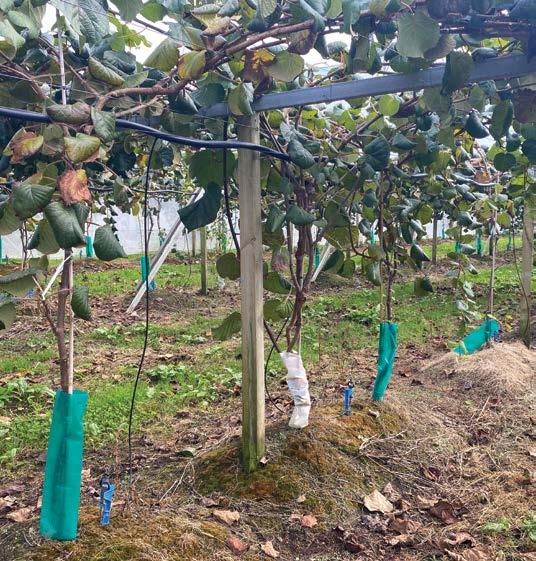
Gary says planting directly into mounds rather than holes keeps the kiwifruit vines from getting too wet
[hydrogen cyanamide] is a very important spray for your flowering, for more budbreak, and we are doing that by taking into account all the different factors including weather and temperature conditions. You need everything in balance.”
As a licensed Zespri grower, Gary works with Zespri’s Planting Plan which includes a site preparation plan and actions to mitigate biosecurity concerns such as possible pests, planting timetables, planting phases, and spacing requirements. The guided plan promotes natural processes as much as possible while maintaining kiwifruit orchard productivity.
Pruning
is essential to obtaining a reliable, high-quality harvest every season
Each bay is 4m long and 5m wide, with 3 plants in each bay – both at the main orchard and at the leased green kiwifruit orchard. Gary also plants his vines in mounds rather than holes to keep the kiwifruit vines from getting too wet. Despite being a more unusual approach for growing kiwifruit in New Zealand, Gary finds that it works well for the property’s soil and climate, and the plants flourish in the mounds.
Gary says that pruning is one of the most critical components of vine care and is essential to obtaining a reliable, high-quality harvest every season. Effective management depends on proper pruning to keep the vines from growing tangled and crowded.


The ORCHARDIST : JUNE 2024 13 FRUIT GROWING
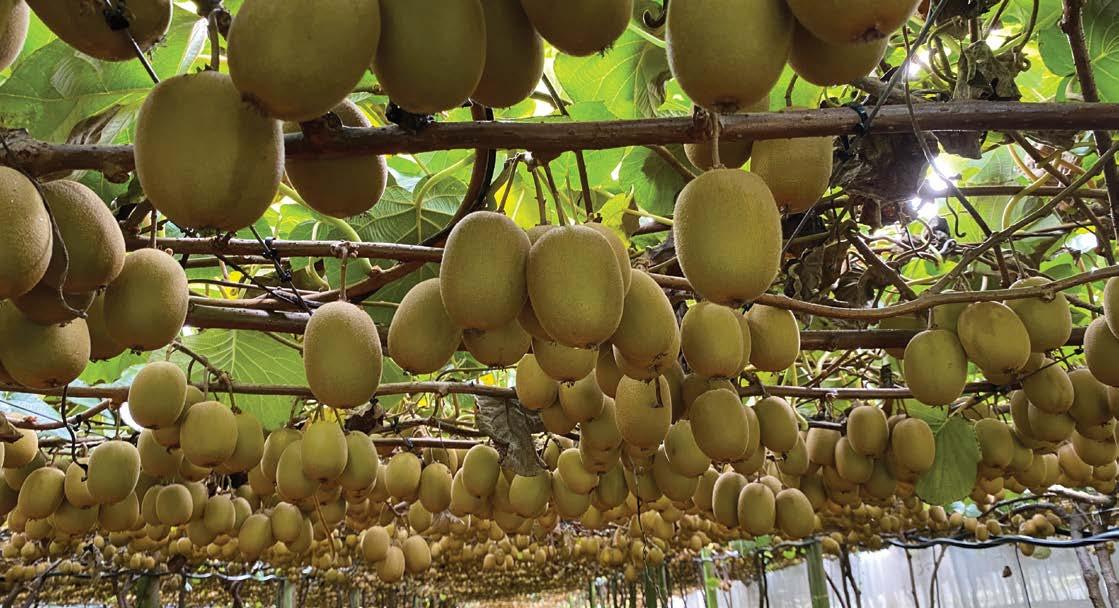
Last winter’s pruning aimed for 40 buds per square metre with an application of Hi-Cane. Budbreak was even with plenty of buds with the crop managed for 85 fruit per square metre.
For the next season, Gary and Amol will winter prune for 35 buds per square metre, aiming for 70 fruit per square metre.
In addition to his orchards, Gary’s operation also prunes around 100ha of other kiwifruit orchards.
For pollination, both bees and artificial measures are used. Gary says he has around 10-12 hives per hectare, noting that the Hayward variety uses more pollination, with 40 bee visits needed for green compared with 6 for gold.
Despite running an orchard just south of Auckland, away from the kiwifruit growing capital of the Bay of Plenty, Gary does not feel out of touch with good growing practices and support.
“A lot of information is online now and Zespri comes more often as they have more staff. There are quite a few kiwifruit growers around Auckland and more orchards are being developed. We also have a good social life and temple here.”
Giving back to the wider community is a big part of Gary’s growing ethic. An active member of the Supreme Sikh Society, he is one of up to 40 growers contributing to its food parcel programme. The society is based in Takanini, South Auckland, and is one of New Zealand Food Network’s 63 food hubs across the country. Read more about the network in NZGrower May 2024.
70 fruit
target yield per square metre from 35 buds
60 tonnes
compost per hectare spread every second year
10-12 hives for pollination, per hectare
38 target fruit size
Kiwifruit on the vine
14 The ORCHARDIST : JUNE 2024 FRUIT GROWING
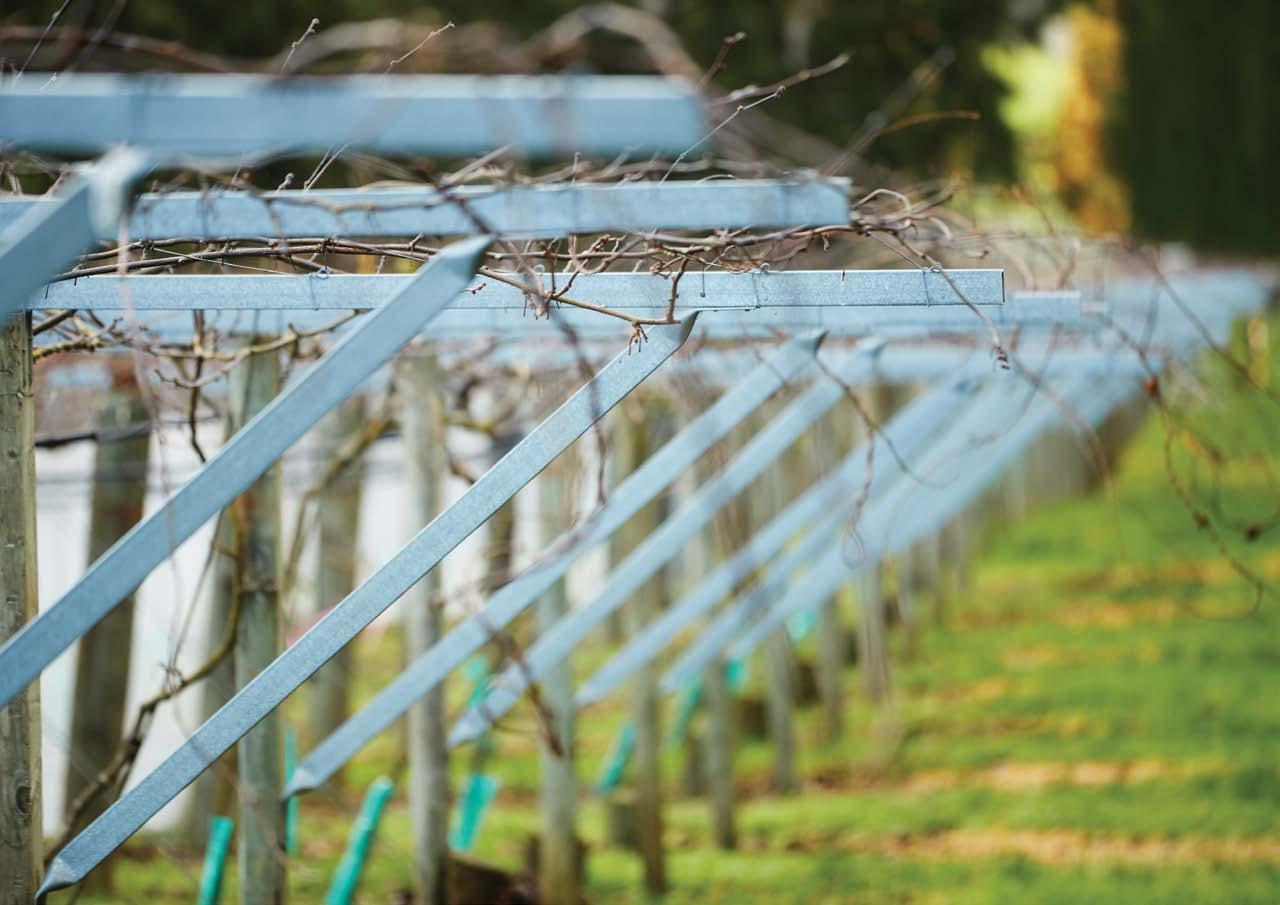






KIWIFRUIT STRUCTURE SOLUTIONS NZ made steel products | Proven reliability | Labour efficient | Built for growth Call Mike 07 282 1538 | agsteel.co.nz AG-BEAM AG-SUPPORT POST AG-Steel Product Range AG-TRIPOST AG-STRINGING POLE AG-BRACE
Helping growers with a seasonal Kiwi workforce
Some great labour initiatives have come out of Covid-19, and the New Zealand Seasonal Work Scheme is one of those. AIMEE WILSON talks with Central Otago regional labour market advisor Tracey Harrison about what she loves about her job.
Mid pandemic in 2020, fruit and vegetable growers needed to get crops off trees fast, but the borders were closed and there was a huge shortage of workers.
The Ministry of Social Development (MSD) stepped in to help, and one of its first initiatives was to help move job seekers across the country to fill the gaps in every growing region.
The New Zealand Seasonal Work Scheme (NZSWS) was launched in November 2020 and Tracey Harrison was appointed a regional seasonal coordinator. She secured a permanent role in February 2023 when MSD decided to put a permanent regional labour market advisor in Central Otago/Queenstown to work more closely with key industries in the area.
Tracey works with horticulture growers south of the Rangitata to utilise the NZSWS for their New Zealanders or seasonal Kiwi cohorts, and absolutely loves the relationships she has built in the industry.

“It just changes so many people’s lives in what you do, and you don’t realise you have made a difference.”
After some growers expressed concerns for the wellbeing of their New Zealand cohort, MSD Southern implemented a pastoral care in-work support programme to help new staff transition into their roles. As a result CAJ Apples has retained 100 percent of its New Zealand workforce in the packhouse due to this ‘in-work support’.
Once in the programme, workers can stay in employment right throughout the country and follow the fruit seasons from cherries in the south to kiwifruit in the north, with some relocation and ongoing costs being covered.
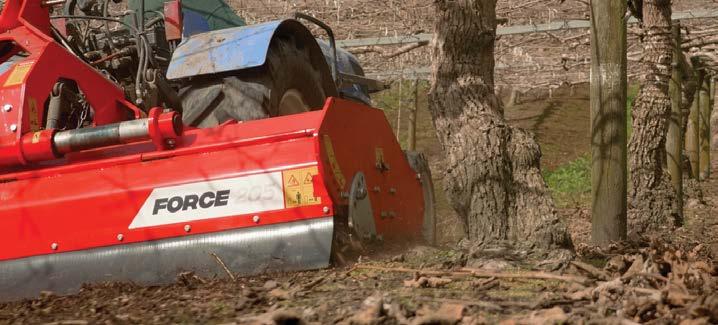 Labour market advisor Tracey Harrison helps New Zealanders find seasonal work in horticulture
Labour market advisor Tracey Harrison helps New Zealanders find seasonal work in horticulture
16 The ORCHARDIST : JUNE 2024 FRUIT GROWING

“We started with focusing on just getting the fruit off the trees, but now the focus is on long-term employment.”
Originally a chef and then in Human Resource Management for 20 years, including in London, Tracey began working for MSD seven weeks before lockdown.
New Zealand workforce retained by CAJ Apples in the packhouse due to ‘in-work support’
“I evolved over Covid, had the most amazing opportunities present themselves at the right time for me to develop my career within the region and nationally with MSD. It’s been a journey which continues to surprise me, I am very passionate about the horticulture sector, that’s largely due to the growers in my region.
Once in the programme, workers can stay in employment right throughout the country
Clyde Orchards manager Kris Robb is a huge supporter of the scheme and continues to have one of the Southern region’s largest Kiwi cohorts yearly. Tracey says the orchard team was a great help in answering all of her questions in the beginning about growing fruit.
Horticulture New Zealand Notice of the 19th Annual General Meeting
Thursday 29 August 2024 at 1.00pm at Mercury Bay Park, Mt Maunganui. Business

1 Welcome and Apologies 2 Voting and Proxies
3 Obituaries
4 Approve Minutes of the 18th AGM
5 President’s and Chief Executive’s Report on HortNZ’s Activities
6 Approve Audited Financial Statements for year ended 31 March 2024 7 Review of Constitution
Levy Rate 9 Director Remuneration 10 Approve 2024/25 Budget 11 Approve Auditors for 2024/25
12 Notices of Motion
13 General Business
Call for Notices of Motion
Any Board Member, Affiliated Organisation or Active Grower Member wishing to have a matter considered at the AGM must give notice in writing to the Chief Executive of Horticulture New Zealand of the notice of motion no later than Thursday, 11 July 2024 at 10.00am. Notices should include the wording of the motion to be voted on and up to one A4 page of explanatory notes. Notices of motions will be listed on HortNZ’s website www.hortnz.co.nz on 18 July 2024 and will feature in the HortNZ magazines (August issue).
8
100% The ORCHARDIST : JUNE 2024 17 FRUIT GROWING
A Red Cross refugee crew at Clyde Orchards
The horticulture industry has become a passion of mine, it is the relationships I have with the growers
Tracey Harrison, regional labour market advisor

“I am grateful for their time, showing and talking to me about the industry, their businesses, and their own journey of how they got to be passionate about the tree. I learn something every time I speak with them, you could give five of the growers the same cherry tree, yet they would treat it differently and produce a different cherry from the same starting point.”
In the 2021 season, the orchard started working with Red Cross refugees, and this was supported by MSD in their first year. Now they all have full-time work, and this initiative has continued for three seasons. This coming season T&G will be participating for the first time alongside Clyde Orchards.
During the Covid-19 pandemic, CAJ Apples was able to bring in new staff from surrounding Otago and Southland towns to work in the packhouse. Some of them have been returning for three seasons and one has already progressed to orchard manager.
Clyde Orchards also shared their staff with the Ettrick packhouse at the end of cherry season to help CAJ with apples, and MSD covered transport costs between the two towns.
Due to changing economic conditions, some businesses are going into voluntary administration/liquidation. As a result, MSD has jobseekers with amazing skills who have recently been made redundant.
“If there is someone wanting to gain experience or work in the horticulture sector, I will try and help them as much as possible to get a seasonal job while supporting them to upskill with the NZSWS.”
Tracey’s job is very diverse, and she gets to work across many different industries, districts, programmes and products that MSD offers.
“The horticulture industry has become a passion of mine, it is the relationships I have with the growers, I love being able to get to know them individually, their businesses, and being out on the orchards. I get to see them in their environment while we discuss ways we can work together to attract the right people while showcasing the industry.”
It just changes so many people’s lives
in what you do
Future challenges include the adoption of emerging technologies being integrated into businesses.
Central Otago now has a zero fossil fuel orchard (Forest Lodge), the Cravo retractable roof at Clyde Orchards and robotic bird scarers across numerous orchards as the growers look at more ways to innovate.
While automation solutions mean less need for labour, “we need to make sure we have the courses to train New Zealanders on the systems and applications that run those.”
Central Otago is seeing more investment in the region from the corporates looking at expanding their reach, “so the playing field is changing and evolving all the time,” she says.
18 The ORCHARDIST : JUNE 2024 FRUIT GROWING

Collaborating, innovating and supporting growers in New Zealand


Fruitfed Supplies works closely with growers, suppliers and industry bodies to support the success and sustainability of the fruit and vegetable sector.
Stay in the loop with the latest crop management practices, including product updates and tech tips.




SIGN UP NOW | Scan the QR code to receive our monthly email updates

We know horticulture

A trading division of PGG Wrightson Ltd

whenappliedasdirected & Homeopathic


-2°c
downto

plant degrees C.
“No damage in temps down to -1.5°C, however, neighbours orchard frosted when sprinkler froze” “evaded frost damage in temps as low as -2°C”
c when pliedasdirected Orga opathic
“more compact flowering” “able to harvest earlier”
“No frost damage down to -2°C”
“stopped frost forming, nil damage”
“No damage in temps down to -1.5°C, however, neighbours orchard frosted when sprinkler froze”
“evaded frost damage in temps as low as -2°C”
“more compact flowering” “able to harvest earlier”
98%protecti
home gardeners, that word is frost.
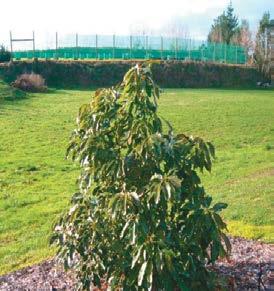
ThermoMax raises internal plant temperature by 0.7-2.0 degrees C.
“warmth cushion” frosts. speed up the compact season and
The level of danger posed to orchardists from frost is best illustrated by the lengths growers go to attempting to neutralise or lessen its effects, and the costs involved. From hiring helicopters through to giant fans and irrigation systems, there is an array of anti-frost measures available. Most are expensive and their benefits vary.
ThermoMax provides a “warmth cushion” for extra protection during frosts.
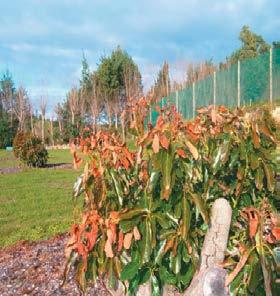


The photos above were taken in May 2005 in a Bay of Plenty Avocado orchard. These trees were virtually side by side and similar results were obtained throughout the 150 tree orchard in comparisons between ThermoMax protected and unprotected Avocado trees Recorded temperatures dropped as low as -3°.
ThermoMax can also help to speed up the growth cycle promoting more compact flowering, a shorter growing season and earlier harvest (up to 3 weeks).
Tamarillo, Avocado, Apples and protection
ThermoMax is ideal for Tamarillo, Avocado, Kiwifruit, Grapes, Passionfruit, Apples and other general crops.
$240 / ha 9 weeks protection
Among the products available in the anti-frost battle is ThermoMax, and it has been doing a very good job for commercial growers for more than 20 seasons. ThermoMax is marketed by BdMax Ltd, who have been producing a range of organic horticultural sprays since the early 1990s. ThermoMax underwent independent testing and evaluation by HortResearch in 2002 (for full results see www.bdmax.co.nz), and has been shown in the field to provide up to 99% protection from frosts down to –2C when applied as directed. In colder temperatures down to –4C, ThermoMax has also shown greater levels of protection than would otherwise have been obtained. In these lower colder temperatures frost control is more effective when ThermoMax is used as part of a combined anti-frost product attack. It combines with all other products except urea. Being a liquid, application is easy. Just add it to your

The effect of ThermoMax on Avocados
The effect of ThermoMax on Avocados Internal Temperature Trial
The effect of ThermoMax on Avocados
Average readings across whole orchard Sprayed Unsprayed


From modest beginnings in 2002, ThermoMax use has grown to now being used in a large number of orchards and gardens throughout the country. Avocado, kiwifruit, blueberry, tamarillo and even the bromeliad growers, are the main users. However, it is effective with most crops. Citrus, grapes, pipfruit and stonefruit all benefit.
HortResearch trials have shown ThermoMax increased fruit set on apples by 50% at -2°C and 33% at -4°C frost (See trial report on www.bdmax.co.nz)
HortResearch trials have shown ThermoMax increased fruit set on apples by 50% at -2°C and 33% at -4°C frost
(See trial report on www.bdmax.co.nz)
In addition to being relatively inexpensive when compared with other anti-frost measures, costing on average, $240/ha for 9 weeks’ protection, ThermoMax also provides secondary benefits, such as more compact flowering and a shortened growing season. This is due to the better spring starts achieved by the internal warming it creates within the plant.
www.bdmax.co.nz

HortResearch trials have shown ThermoMax increased fruit set on apples by 50% at -2°C and 33% at -4°C frost. (See trial report on www.bdmax.co.nz)
www.bdmax.co.nz
ThermoMax is a non-chemical, Bio-Gro certified product, exempt from the Agricultural Compounds & Veterinary Medicines Act (ACVM). It leaves no residues and has no withholding periods. ThermoMax is applied after being diluted with water, by a normal agricultural sprayer and is totally environmentally friendly. It is also on the Zespri approved products list.
While ThermoMax is available online, it can also be obtained through Farmlands and Horticentre throughout the Bay of Plenty, Waikato, Auckland and Gisborne regions. There are two short ‘common questions’ videos available on the website www.bdmax.co.nz or call direct on 0800 735 859 or email bdmax@xtra.co.nz.
20 The ORCHARDIST : JUNE 2024
Recorded temperatures dropped as low as -3°. 16.8 14.0 14.9 20.0 18.0 16.0 14.0 12.0 10.0 I nte r nal T em p eratu res 15.5 18.4 18.9 14.3 15.8 Sprayed 10/7/05 Sprayed 2/8/05 14 July 02 1 July 05 28 July 05 4 August 05 Average readings across whole orchard Sprayed Unsprayed
The photos above were taken in May 2005 in a Bay of Plenty Avocado orchard. These trees were virtually side by side and similar results were obtained throughout the 150 tree orchard in comparisons between ThermoMax protected and unprotected Avocado trees
16.8 14.0 14.9 20.0 18.0 16.0 14.0 12.0 10.0 I nte r nal T em p eratu res 15.5 18.4 18.9 14.3 15.8 Sprayed 10/7/05 Sprayed 2/8/05 14 July 02 1 July 05 28 July 05 4 August 05
Labour efficiency and effectiveness –creating labour precision
Jonathan Brookes and Sarah de Bruin : AgFirst consultants
Most fruit crops grown in New Zealand are labour intensive, with seasonal labour peaks, as well as ongoing labour requirements throughout the growing season. Thus, access to a reliable supply of skilled labour, available at peak times and at a manageable business cost, is essential to successful fruit production in New Zealand.
Labour costs currently make up around 65 percent of on-orchard expenditure in pipfruit and kiwifruit, so at a time when wage costs continue to increase, growers must focus on efficient and effective labour solutions to maximise quality output and therefore profitability.

Redistributing labour peaks can also have a fruit size benefit, by getting trees down to cropload targets earlier
As a long term / big picture strategy we need to continuously look for management techniques and ideas that reduce the need, or the overarching cost of labour. In the short to medium term, labour will continue to be a large proportion of on-orchard expenditure, and therefore in the interim needs to be managed well for fruit growing to remain financially sustainable, while achieving optimum results.
In our world of twigs and roots pedigree is everything.

As we all know, in the fruit growing industry ultimately everything stems from a twig. We have alliances with some of the world’s best new fruit variety developers and rootstock breeding programmes. These relationships and our continual search for the best cultivars puts us at the forefront of global variety and rootstock development in New Zealand.






Our unique capability across a wide variety of crops and our focus on matching varieties and rootstocks to conditions allows us to offer real, informed advice. Call:
Grant Bryan, 0274 201 003, grant.b@waimea.group
Kate Marshall, 0274 201 033, kate.m@waimea.group


www.waimeanurseries.co.nz
waimea
The ORCHARDIST : JUNE 2024 21 FRUIT GROWING
Sustainable orchard labour solutions
We believe there are three key pillars to ensuring the sustainability of orchard labour, and therefore the productivity and profitability of the overall orchard business. The three pillars are perfection, production and people. Each pillar contributes significantly to the orchard labour situation, and when one is lacking, the implications can be major.

Perfection
A grower’s ultimate aim is to maximise the production and optimal recovery of quality fruit. To achieve this, growers should be chasing perfection and continually looking at opportunities for improvement, both in the short and longer term. Perfection comes both from the execution of the job, but also in the outcome of the fruit.
This could be as small as changing a thinning instruction to set the cropload up differently, or as large as redeveloping blocks with higher value cultivars, on canopy systems that maximise yields and quality recovery.
For most orchard crops the harvest period is the highest labour demand period, thus the most costly, in both the total time required as well as time criticality and task execution. The higher the quality of fruit on the tree, the easier it is to harvest. Thus, any inputs which improve the quality on the tree, resulting in improved efficiency and effectiveness of harvest are likely to have a cost benefit.
Additionally, being knowledgeable about the market requirements and grade standards also means growers can ensure they set correct targets that will optimise returns (fruit size, quality, and yield targets) that hit the ‘sweet spot’.
Following on from this, communication to staff about task execution enables them to deliver to the expected standard of ‘perfection’. This ensures the pathway to achieving the set targets remains clearly laid out, and on track throughout the growing season, keeping everyone working towards the same end goal.
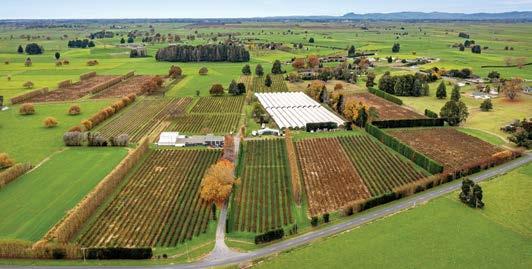


Founded in 1984 by Murray & Anne Flay this 29.5ha of premium flat horticultural land produces raspberries, blackberries and boysenberries for local and international markets. The business is well known and supported both locally and nationally with established distribution lines and a reputation for quality. A retail shop provides fresh and frozen berries, ice creams and a ‘pick your own berries’ experience. This lifestyle/family business is ripe for opportunities and accelerated growth.
www.pggwre.co.nz/TEA39709
NDER (Unless Sold Prior) Plus GST (if any) Closes 11am Friday, 12 July 2024 VIEW By Appointment Only
Rob Pierce
M 021 137 8105 rob.pierce@pggwrightson.co.nz
Peter Wylie
M 027 473 5855 pwylie@pggwrightson.co.nz


People
Who makes up your current labour pool, and are these people achieving tasks to the expected standard of perfection? How do you find staff, how do you retain them, and how do you widen the labour pool if need be?
To remain sustainable and achieve the expected standard of ‘perfection’, it is important the labour source continually shows up and performs to the best of their ability.
Understanding the motivations of your staff is important. Are they motivated by the need to pay their bills, the sense of satisfaction after a job well done, or simply because they enjoy working in the outdoors? With orchards being variable environments, how do you maintain motivation in both the sun and the rain? Could you shout a Friday ‘smoko’ sausage roll every now and then, or provide wet weather gear?
Production
Production is the third pillar of orchard labour sustainability. Having people who are willing to work to perfection is not good enough. There needs to be production results at an acceptable output rate to back the other two pillars up and provide a profitable outcome. This is a key driver in the labour cost.
Labour efficiency and effectiveness are pivotal to enhancing production outputs of the team.
RURAL | LIFESTYLE | RESIDENTIAL TENDER
TE
Flays Berry Farm - Berryfresh
1972 Te Rahu Road Helping grow the country PGG Wrightson Real Estate Limited, licensed under the REAA 2008 Perfection People Orchard labour sustainability
TE AWAMUTU
22 The ORCHARDIST : JUNE 2024 FRUIT GROWING
Efficient labour
Labour efficiency is the ability to complete a task with the least amount of wasted time, effort, resources and ultimately, cost.
Efficiency is a measurable metric. Managers should track labour efficiency, to allow an understanding of what worked well, what has not and the number of labour units that were required to get the job done. This also provides an opportunity to recalibrate if necessary, and using tools such as a harvest scheduling report can help growers model different scenarios to find the most efficient plan. Measuring efficiency, and therefore identifying inefficiencies, at both a task level and a block level, allows for full transparency and optimisation of your systems.
Labour efficiency and effectiveness are pivotal to enhancing production outputs of the team
Best practice training should be implemented, alongside good supervision and feedback around the work being carried out. Staff need to be well motivated, to ensure the tasks are completed to the required standard, and within the set timeframe. This comes back to the question above, of ‘what the motivator might be?’ Additionally, managers should understand both the short and longer term solutions, as well as the best timing to implement these specific strategies. This also contributes to effectiveness, which will be further explored below.
To maintain efficiency, things should be kept as simple as possible. This allows worker decisions to be kept to a minimum, with staff working to clear instructions around what the expected task is and how to achieve the required outcomes. Systematic tasks allow for improved speed, accuracy and repeatability, meaning that variation within an orchard system can be reduced.
Being cost efficient doesn’t necessarily mean cost cutting. For example, increasing productivity may sometimes involve increasing expenditure, however, ultimately this will provide you with more gross cartons or higher value fruit to spread those costs over.
Effective labour
Effectiveness is ensuring a task is carried out successfully, to the desired quality or specification, with the least variation and the most positive future outcome.
Never forget the big picture! Managers need to understand the implications of a task and how it fits into the seasonal plan. It’s important that decisions made now are not going to make things harder in the long run.

The ORCHARDIST : JUNE 2024 23 FRUIT GROWING
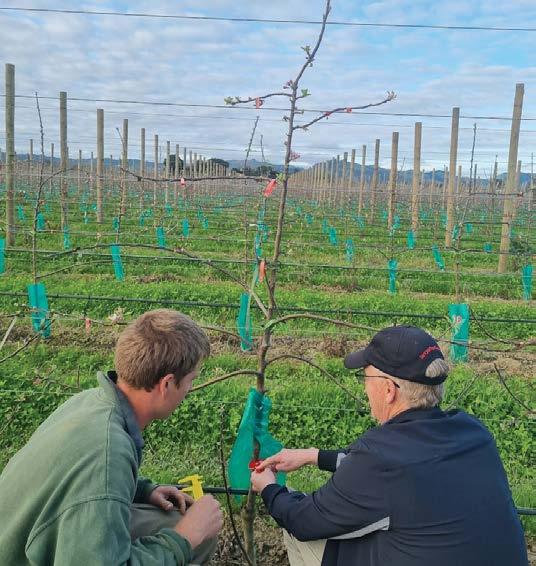
Often, long term solutions can reduce the need for labour, but still achieve the required outcome. Be cautious not to fall into the trap of a “quick fix”, that may come back to bite you further down the track.
SOME EXAMPLES OF THESE “QUICK FIXES” INCLUDE:
A cheap, quick pruning job that is not carried out correctly. This then doesn’t reduce the bud load or refine distribution through the tree which may result in a more expensive hand thinning job. Not spending enough time hand thinning a block, resulting in smaller, low-quality fruit on the tree at harvest.
Skipping tasks when setting up a canopy in a development block in an attempt to save labour expenditure, paying for the decision through other costs, such as growth regulators, or a reduced packout due to poor light interception and colouring conditions.
To quantify efficiency, and effectiveness of tasks, growers should have an understanding of the breakdown of on-orchard costs by labour category. This will help identify areas or tasks where you might be blowing out costs, or alternatively where you might be running well and efficiently – what learnings can you take from this?
Benchmarking where your costs fit compared to others using industry info such as MPI Pipfruit Orchard Monitoring is a great place to start. [Editor’s note: Contact NZ Apples and Pears or MPI for the latest available data.]
This then provides background to enable good decision making and planning for the upcoming seasons. Some blocks warrant extra effort, inputs, and potential cost, and in doing so can reward with a more profitable outcome. However, some do not. Understanding where your spending is going means you can adjust and ensure you are getting the most bang for your buck.
Labour peaks on-orchard include young canopy development, pruning, thinning and harvest. During these periods, how when and where you allocate the labour pool will greatly impact the effectiveness of the outcome. Redistributing labour peaks has a two-fold benefit. There is the ability to create more effective staff management throughout the season, and increased continuity of work providing opportunity for employing more full time labour and therefore potentially widening the labour pool and skill set of the orchard staff. Additionally, by redistributing labour, bringing some tasks forward or introducing new (well timed) management strategies to get the tree get down to fruit target earlier, will drive early fruit size accumulation due to the cropload being lowered earlier in the season, and reduced sink loading improving carbohydrate efficiency within the tree. In many different fruit crops, this increased size will also have a correlation to increased returns. Particularly in stone fruit, kiwifruit and apples, optimum sized fruit of a good quality achieve a higher return.
Examples of labour redistribution tasks include flower thinning in apples prior to lower fruitlet set, implementing a detailed winter prune to target specific bud loads or rubbing outside buds to promote the king flower in kiwifruit. As a result, you are not loading carbohydrate into fruit which will eventually get thinned off, lowering the hand thinning job requirements, and creating a more precision focus.
Conclusion
Managing the labour intensity of orchard crops including manipulating the labour peaks, and securing reliable, committed, skilled staff relies on both short term and long term planning.
Perfection, production, and people are the pillars to orcharding success. Growers must work out how to manage these pillars efficiently and effectively from season to season. The benefit of this is not only the gain in insight and control over operational tasks, but the lift in quality, and therefore optimised returns on our outputs.
With labour costs making up such a large portion of our on-orchard expenditure, and only continuing to increase, growers have to think big picture, adapting orchard management techniques to continue to farm a financially sustainable business.
24 The ORCHARDIST : JUNE 2024 FRUIT GROWING
Simple clear instructions for systematic tasks help staff work efficiently and effectively
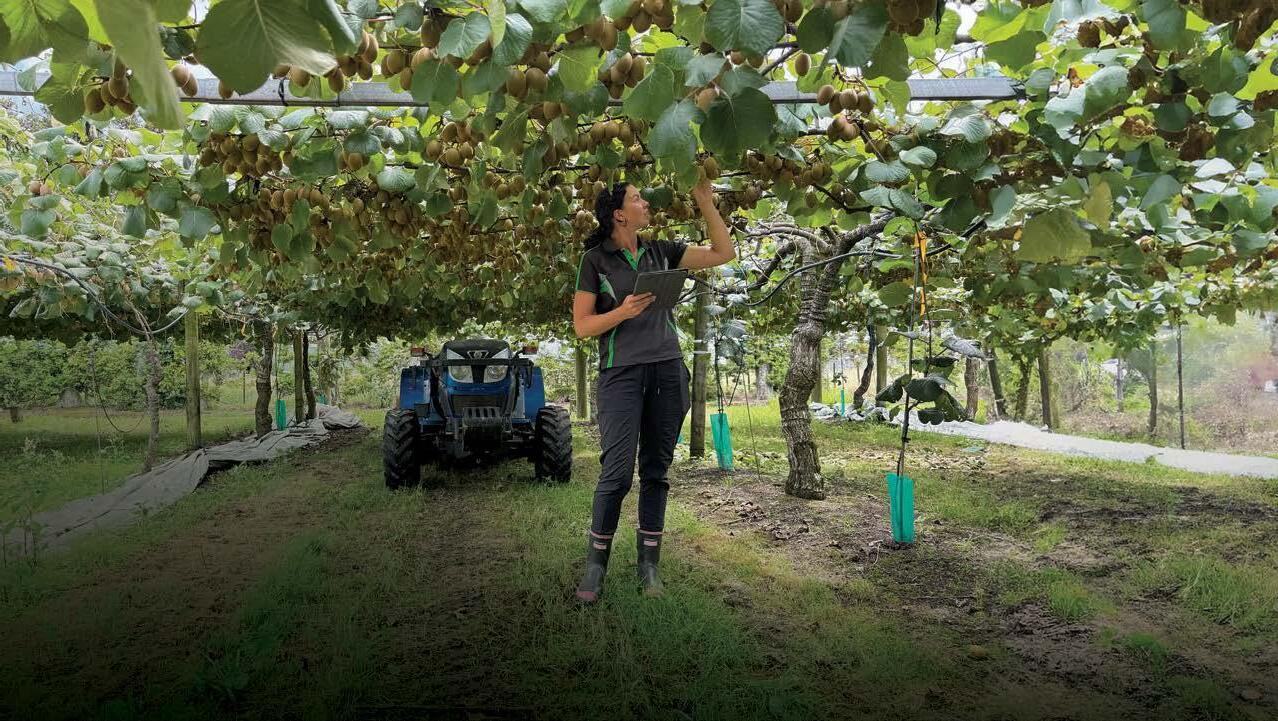
YOUR INDUSTRY
ACROSS THE SECTOR — ACROSS THE COUNTRY

Contractors are vital for the horticulture industry
Photo from Land Information New Zealand Data Service
Employing migrants –what you need to know
Horticulture, like many industries in New Zealand, has relied on migrant labour under the Accredited Employer Work Visa system. Horticulture should have zero tolerance for exploitation, however the onus is on you, the employer, to ensure compliance – even when using contractors. We asked the Labour Inspectorate, Immigration New Zealand and Inland Revenue to spell out your obligations.
Anne Hardie
Contractors are vital for the horticulture industry and in most cases, it works smoothly. But the occasional contractor using migrant labour does not follow the rules and employers need to remember they also have a responsibility to ensure workers are not exploited.
Kevin Finnegan has the long title of ‘sector strategy lead for primary industries’ in the Labour Inspectorate (part of the Ministry of Business, Innovation & Employment). His advice for employers seeking labour through contractors using Accredited Employer Work Visas is to do their due diligence – the lowest price is not always the best option. “If it seems too good to be true, it probably is.”
He says there is more need than ever before to check out contractors because as accredited employers they can bring labour into the country and “unfortunately, they are not all honest employers”.
The horticulture industry has “pockets” of worker exploitation which he says is largely found among contractors rather than growers, but he says growers put their crop at risk and also the industry if they do not check out contractors and ensure they are hiring the right one. The potential of modern day slavery legislation as indicated by the government could also have an impact on supply chains, he says.

“As growers, if you don’t get it right, you’re putting your crop at risk. There will come a day when buyers will say: ‘we’re not buying from here’.”
Kevin says New Zealand depends on its reputation for overseas trade and any bad press on the other side of the world about migrant exploitation can have major ramifications.
If it seems too good to be true, it probably is
If a contractor is undercutting other contractors, he says it might be because their workers are being exploited and those workers will usually keep quiet because they are scared of losing their visas or employment.
“They hear about (New Zealand) and it seems like a dream and when they get here, it can be a bit of a nightmare sometimes.
“When you have contractors or staff on your property, try and engage with them. If you have concerns, make a crime stopper complaint. It can be anonymous. Some of those people won’t make a complaint themselves.”
le Cooke



Est 1956 L.E. Cooke Ltd L.E. Cooke Nurseryman Growers of high quality fruit trees your fruit tree Try us first for requirements! Marty & Kelli Cooke 75 York Road, Longlands, Hastings, 4120 PH: 06 870 7043 EMAIL: lecooke@xtra.co.nz CELL: 0274 396 205 (Marty) NurserymanLtd •Pears •Plums •Apples •Apricots •Cherries •Peaches •Nectarines www.lecooke.co.nz Proudly serving the fruit industry for 68 years The ORCHARDIST : JUNE 2024 27 YOUR INDUSTRY
TAX RULES FOR HIRING CONTRACTORS
If you directly hire any type of contractor (individual, partnership, trust or company) for work or services that are for the supply of labour or substantially for the supply of labour in relation to fruit crops, orchards, vegetables or vineyards, you must deduct tax from the contractor’s payments. You use the IR330C Tax rate notification of contractors form unless the contractor has a certificate of exemption (COE) or a tailored tax rate (TTR).
What activities are covered: Any payment for agricultural, horticultural, or viticultural work done, or services rendered, under contracts or arrangements that are for the supply of labour, or substantially for the supply of labour, on or in connection with land used or intended to be used in relation to fruit crops, orchards, vegetables, or vineyards.
The principal term is ‘substantially for the supply of labour’.
Inland Revenue says most people do the right thing and pay the right amount of tax. But there are a few concerning practices in the horticulture sector –workers being paid under the table; cash sales not being reported correctly; and poor record keeping.
Inland Revenue says they want growers and contractors to manage their own tax obligations and “get it right from the start”. And if they have any issues to contact them so they can help.
Schedularpaymenttaxrates Ifyouarereceivingpaymentforanyofthetypesofworklistedbelow,entertheactivitynumberintheboxatsection2onpage1. Thedescriptionbelowmaynotincludeallactivities.Foramoredetaileddescriptionseeschedule4oftheIncomeTaxAct2007. You’llgenerallyberequiredtocompleteanincometaxreturnattheendofthetaxyear.
1ACCpersonalservicerehabilitationpayments(attendantcare,homehelp,childcare,attendant careservicesrelatedtotrainingforindependenceandattendantcareservicesrelatedtotransport forindependence)paidundertheInjuryPreventionandRehabilitationCompensationAct2001
2Agriculturalcontractsformaintenance,development,orotherworkonfarmingoragricultural land(nottobeusedwhereCAEcodeapplies)
Schedularpaymentsarepaymentsmadetopeoplewhoarenotemployeesbutarecontractors.Thisincludesindependentcontractors,labouronlycontractorsandself-employedcontractors.You’rereceivingschedularpaymentsifyou’renotanemployeeandthetypeofworkyou’re receivingapaymentforisanactivitylistedonpage3. Ifyouaren’tordinarilyrequiredtohavetaxdeductedfrompaymentsyoureceiveyoucanchoosetohavetaxdeducted.Thiswillbetreatedas schedularpayments,ifthepersonpayingyouagrees.Youwillneedtogettheiragreementinwriting.
3Agricultural,horticulturalorviticulturalcontractsbyanytypeofcontractor(individual, partnership,trustorcompany)forworkorservicesrenderedundercontractorarrangementfor thesupplyoflabour,orsubstantiallyforthesupplyoflabouronlandinconnectionwithfruit crops,orchards,vegetablesorvineyards
Apprenticejockeysordrivers
45 5Cleaningoffice,business,institution,orotherpremises(exceptresidential)orcleaningor launderingplant,vehicle,furnitureetc
Tax rate notification for contractors
He says the temporary work visas that were introduced after the pandemic enabled a few unscrupulous employers to abuse the system and he points to cases in the construction industry which made news headlines. In April, Immigration Minister Erica Stanford tightened the rules to rule out lower-skilled migrants and add an English-language requirement. Kevin says it will take time for those changes to filter through the system.
James Friend from Immigration New Zealand’s investigations team says employers need to be aware of the various visa conditions – and that applies to whether employees are employed directly or through a contractor.
“Some employers probably don’t understand the responsibility on them, especially when they have contractors coming in. Be mindful that there could be some onus on the employer about how those migrants are being treated employment wise.”
Importantly, he says migrants on accredited work visas need to be earning the median wage and if they are not, then it may be a breach of visa conditions.
James says it is also important for employers to be aware of the new infringement regime which has only been in place since April. It covers the employment of migrants who are unlawfully working in New Zealand or in breach of their visa conditions. For example, they may have a visa to work as a chef but are working in construction, or they have a visa to work in Tauranga and are working in Christchurch. In both examples, it is a breach of their visa.
Employers can be issued an infringement notice for each infringement offence and James says a company can be fined $3000 for one offence and stood down from employing more migrants for six months to a year.
Some employers probably don’t understand the responsibility on them
6Commissionstoinsuranceagentsandsub-agentsandsalespeople 7Companydirectors'(fees)
8Contractswhollyorsubstantiallyforlabouronlyinthebuildingindustry
9Demonstratinggoodsorappliances
10Entertainers(New Zealandresidentonly)suchaslecturers,presenters,participantsinsporting events,andradio,television,stageandfilmperformers
11Examiners(feespayable)
12Fishingboatworkforprofit-share(supplyoflabouronly)
13Forestryorbushworkofallkinds,orflaxplantingorcutting 14Freelancecontributionstonewspapers,journals(eg,articles,photographs,cartoons)orforradio, televisionorstageproductions
15Gardening,grassorhedgecutting,orweedorvermindestruction(foranoffice,business orinstitution) 16 Honoraria
Usethisformifyou’reacontractorreceivingschedularpayments. Ifyou’rereceivingsalaryorwagesasanemployee,you’llneedtousetheTax code declaration - IR330 form. IfyoureceiveschedularpaymentsyouwillreceiveaninvoiceforyourACCleviesdirectlyfromACC. Oncecompleted: Contractor Givethisformtothepersonpayingyou. Payer DonotsendthisformtoInlandRevenue. YoumustkeepthiscompletedIR330Cwithyourbusinessrecordsforsevenyearsfollowingthelastschedularpaymentyoumaketothepersonorentity.
“Obviously, the stand down then affects any sort of accredited status. Any migrant who has a visa to work for that employer can still work for them. They just can’t get new migrants while they’re stood down.”
That could be crucial at peak times of the year, he says.
17Modelling
18Non-residententertainersandprofessionalsportspeoplevisitingNew Zealand
19Paymentbyalabourhirebusinesstoanyperson(egindividual,partnership,trustorcompany) performingworkorservicesdirectlyforaclientofthelabourhirebusinessoraclientofanother person,underalabourhirearrangement
ird.govt.nz/tools-calculators
1. Your details Full Name IRD number (8digitnumbersstartinthesecondbox. ) Ifyoudon’thave:yourIRDnumberyoucanfinditinmyIRoronlettersorstatementsfromus. nIRDnumbergotoird.govt.nz/irdnumbertofindouthowtoapplyforone.
Ifyouhaveatailoredtaxrate(TTR)enterthisonpage1andshowyouroriginalTTRcertificatetoyourpayer. ATTRisataxrateworkedouttosuityourindividualcircumstances.YoumaywantaTTRiftheminimumtaxratethatappliestoyou willresultinyoupayingtoomuchtax.Forexample,ifyouhavebusinessexpensesthatwilllowertheamountoftaxyouneedtopayon yourincome.YoucanapplyforatailoredtaxrateinmyIRorbycompletingaTailoredtaxcodeapplication-IR23BSformwhichyou can download atird.govt.nz/forms-guides Ifyou’reanon-residentcontractortheapplicationprocessisdifferent.Formoreinformationsee ird.govt.nz/apply-for-exemption-nr-contractor Ifyoudon’twanttaxdeductedfromyourschedularpayments,youmaybeabletoapplyforacertificateofexemption(COE)inmyIRor bycompletingtheRequestforPAYEexemptiononschedularpayments IR332formonourwebsite. Ifyou’rearesidentcontractorpaidbyalabourhirebusinessunderalabourhirearrangementyoucannotuse COEforthese payments.Youmaybeabletoapplyfora0%tailoredtaxrateinstead.YoucancompleteanIR23BSinmyIR.
–greenstone(notretailsales) –sphagnummoss(notretailsales) –whitebait(notretailsales) –wilddeer,pigsorgoatsorpartsoftheseanimals22Publicofficeholders(fees) 33 45 23Shearingordroving(nottobeusedwhereCAEcodeapplies) 24Television,videoorfilm:on-setandoff-setproductionprocesses(New Zealandresidentsonly)20
Formoreinformationsee ird.govt.nz/coe-schedular-payments
2. Your tax rate YoumustcompleteaseparateTaxratenotificationforcontractors IR330Cforeachsourceofcontractingincome Refertotheflowchartonpage2andenteryourtaxratetoonedecimalpointhere. % Refertothetableonpage3andenteryourschedularpaymentactivitynumberhere. Yourtaxcodewillalwaysbe: WT
Non-residents YoucanapplyforanExemptionfromnon-residentcontractors’taxbysending completedNon-residentcontractors’tax(NRCT) exemptionapplicationform IR197andacopyofyourcontracttonr.contractors@ird.govt.nzorasasecuremailinmyIR.
25Voluntaryschedularpayments 20 45 Ifyouareanon-residentcontractorreceivingacontractpaymentforacontractactivityorservice 26Non-residentandnoneoftheaboveactivitiesareapplicable,then: contractor(andnotacompany)
Formoreinformationsee ird.govt.nz/non-resident-contractorsorcalluson+64 8903056 Non-resident entertainers
27Non-residentcontractor(andacompany)
Note:Ifyouneedhelpchoosingyourtaxrateusetheestimationtoolatird.govt.nz/tax-rate-schedular-payments
Thefollowingmaybeentitledtoanexemptionfromtax: on-residententertainerstakingpartin culturalprogrammesponsoredbyagovernmentorpromotedbyanoverseasnon-profitculturalorganisationon-residentsportspeopleofficiallyrepresentinganoverseasnationalsportsbody.
3. Declaration Name Designationortitle (ifapplicable) Forexample,director,partner,executiveofficeholder,manager,dulyauthorisedperson
Formoreinformationsee ird.govt.nz/nr-entertainers Youcancontactusbyemailatnr.entertainers@ird.govt.nzorphone+6499844329
Signature 2 0 Month ear Givethiscompletedformtoyourpayer.Ifyoudon’tcompletesections1and3yourpayermustdeducttaxfromyourpayatthe no-notificationrateof45%,exceptfornon-residentcontractorcompanieswhereit’s20%.
PrivacyMeetingyourtaxobligationsmeansgivingusaccurateinformationsowecanassessyourliabilitiesoryourentitlementsundertheActswe administer.Wemaychargepenaltiesifyoudon’t. Wemayalsoexchangeinformationaboutyouwith: omegovernmentagencies nothercountry,ifwehaveaninformationsupplyagreementwiththem tatisticsNew Zealand(forstatisticalpurposesonly). Ifyouasktoseethepersonalinformationweholdaboutyou,we’llshowyouandcorrectanyerrors,unlesswehave lawfulreasonnotto. Contactuson0800377774formoreinformation.Forfulldetailsofourprivacypolicygotoird.govt.nz/privacy RESET FORM
“It’s best practice and, if you are employing migrants, employers should know these things. Some of the smaller employers take migrants at their word, but it’s really important that things like VisaView are used – an online system where you can just jump online and check potential employees’ visa status to check they do have the legal right to work here. Take that time to do due diligence.
Activity number Activitydescription Standard tax rate – % No-notification rate – %
10.5
15 45
15
15
20 45
33 45
20 45
25 45
20 45
33
45
25 45
33 45
20 45
N/A
20 45 20 Paymentsfor:
–mailcontracting –milkdelivery
salesof: 25 45
15
45
45
–caretakingoractingasaguard
–refuseremoval,streetorroadcleaning –transportofschoolchildren 21Proceedsfrom
–eels(notretailsales)
45
45
15 20
2
Use the flow chart below to work out what tax rate to use Areyou nonresidententertainer sportspersonorprofessionalvisiting New Zealand? Doyouhavea tailoredtaxrate certificate? (seeA) Yourtaxratewill be 20% Usetherateon thecertificate Areyouanonresidentfortax purposesordoyou hold temporary entryclassvisa? Doyouwantto chooseyour tax rate? Usethestandardtax ratefortheactivity typeyoudo(page3) Doyouwant tochooseyour tax rate? Youcanchooseaspecificrate foryoursituationbutitcannot belowerthan10%.Useour estimationtoolforcontractorsat ird.govt.nz/tools-calculators Usethestandardtax ratefortheactivity typeyoudo(page3) Youcanchooseaspecificrate foryoursituationbutitcannot belowerthan15%.Useour estimationtoolforcontractorsat
No No No No Yes Yes Yes Yes No Yes
1 IR330C October2023
28 The ORCHARDIST : JUNE 2024 YOUR INDUSTRY
“Most employers and visa holders do the right thing and the system is working as it should. The responsibility for compliance does sit with employers and migrants and I think most do really well. There’s obviously a small number of employers that I think choose to break the law and deliberately so. For the most part, the majority of employers are actually doing a really good job.”
He advises any employer employing migrants to be aware of their obligations.
If you don’t get it right, you’re putting your crop at risk
Kevin has worked with the horticulture industry for the past nine years and says the industry has taken ownership of good social practice in that time. He points to NZGAP’s Contractor Standard which includes social practice requirements and enables contractors to gain certification so growers can have confidence in their choice of contractors. There is a list of certified contractors on the NZGAP website, and also a list of those contractors who have had certification cancelled.

Migrants on accredited work visas need to be earning the median wage
Employers can be issued an infringement notice for each infringement offence
He points out the RSE scheme is quite different to employing labour requiring visas as it is already subject to considerable scrutiny, which includes pastoral care and accommodation standards.
“Accommodation has improved out of sight in the main and employers have invested a lot of capital and certainly come to the party.”
On a final note, Kevin says the sector and its regulators need to work together to achieve a ‘one standard’ audit or assurance programme that applies across all growers and employers within the horticulture sector.
THE NEW REX 4.

ALL ROUND SPECIALIST.
The REX4, winner of the Specialised Tractor of the Year 2024 award, is setting a new standard for compact specialty tractors. With a range of drivetrains and wheelbases across six models, it’s the perfect addition to your orchard or vineyard.
First-class ergonomic comfort and 360° visibility from the cab make this machine a pleasure to work in.
Ask us about the Landini REX4 and let’s grow together. FIND YOUR LOCAL DEALER: Landininewzealand.co.nz
REX
SMALL
BIG
4
IN STATURE.
ON STYLE.
The ORCHARDIST : JUNE 2024 29 YOUR INDUSTRY

The outlook for winter
Georgina Griffiths : Meteorologist, MetService
MetService long-range forecasters take a variety of model data – with a focus on the European Centre for Medium-Range Weather Forecasts (ECMWF) ensemble climate model – and pair this with experience and expertise, to produce long-range predictions. Here is the latest MetService commentary for winter (June to August), produced hot off the press in mid-May.
Climate drivers
The El Niño Southern Oscillation (ENSO) climate system is forecast to remain in its neutral phase during winter (June to August).
This means that our winter weather maps will be driven by climate drivers closer to home.
For winter 2024, it looks like following factors will be most influential for us:
1. Sea temperatures around New Zealand should sit near average over winter – this will influence our winter air temperatures
2. The Northland high is forecast to be stronger than usual
3. Westerly winds are likely to prevail across the lower South Island.
Adding all of those ingredients together, this winter looks likely to play out quite differently to the last few winters we’ve experienced.

Let’s start with heat. The lack of surrounding ocean heat (marine heatwave) this winter will be very noticeable to the average Kiwi, after several record warm winters here in New Zealand. Previously:
• Winter 2020 was the warmest winter on record.
• Winter 2021 then broke that record, leap frogging into the #1 slot.
• However, winter 2022 then set a new record, and remains our warmest winter ever.
• Winter 2023 ranked as New Zealand’s 5th warmest winter.
Temperature predictions – biased too warm?
While raw climate model data (see tabled monthly temperature predictions) still signal winter temperatures that sit ‘somewhat above average’, MetService forecasters are tracking a warm bias in the climate prediction models. After a cold March, and a very cold May (neither well handled by the seasonal models), forecasters are aware that things are running ‘colder than modelled’. A large part of this due to our surrounding sea temperatures sitting close to average.
We expect winter 2024 temperatures, overall, to end up near average across the North Island and near-toabove-average across the South Island
It is a long time since New Zealanders have had to cope with anything like a ‘normal’ winter. In many frost-prone regions of New Zealand, we’ve already seen more frosts so far this autumn than was seen in the previous five years, with a notable frosty snap around 9-10 May (this was that cold snap that caused concerns about our power supply).
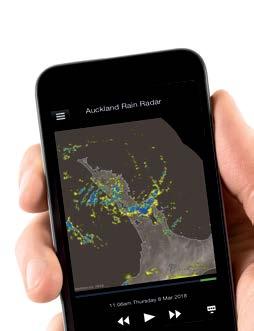

On balance, growers right across the country should plan for a greater risk of frost this winter, than seen in recent years Notably, this risk of ‘more frosts than usual’ is probably amplified in the areas that typically see fewer frosts (e.g. the northern half of the North Island), under high pressure and light winds (see comment below).
30 The ORCHARDIST : JUNE 2024

Table 1 : Raw ECMWF forecast monthly temperature anomaly (°Celsius, deviation from 1993-2016 average). Forecast anomalies within +/- 0.3°C of the monthly average are considered ‘near average’. Predicted monthly temperature anomalies +/- 0.3-0.8°C are considered ‘above/below average’, while monthly temperature anomalies exceeding +/- 0.8°C are considered significant (well above or well below average). As a guide, record warm monthly anomalies are typically around 2.0°C – 2.2°C.

Table 2 : Raw ECMWF forecast monthly rainfall anomaly (% deviation from 1993-2016 normal). Forecast anomalies within 10% of the monthly normal are considered ‘near normal’. Predicted monthly rainfall anomalies +/- 10-20% are considered ‘above/below normal’, while forecast monthly rainfall anomalies exceeding 20% are considered significant (well above or well below normal).
If anomalies exceeding 50% are forecast, extremes are likely if the forecast plays out as expected.
+0.4 +0.6
+0.3 +0.6
+0.4 +0.6
+0.3 +0.5 +0.7
+0.3 +0.5 +0.6
Paraparaumu +0.3 +0.5 +0.6
+0.5 +0.7
+0.5 +0.6 New
Taihape
Raetihi
Taupō Airport
Taumarunui
Te Kuiti
Nelson Airport
Blenheim
Kaikōura
Culverden
Darfield
Christchurch Airport
Ashburton
Geraldine
Timaru
+0.3 +0.4 +0.6
+0.3 +0.5 +0.7
+0.3 +0.5 +0.7
+0.3 +0.4 +0.6
+0.3 +0.5 +0.7
+0.3 +0.5 +0.7
+0.4 +0.7 +0.8
+0.4 +0.6 +0.7
+0.5 +0.7 +0.8
+0.5 +0.9 +1.0
+0.5 +0.9 +1.0
+0.4 +0.7 +0.9
+0.5 +0.8 +0.9
+0.6 +0.9 +1.0
+0.5 +0.7 +0.8
Tekapo +1.0 +1.1 +1.1
Ōmarama +1.0 +1.2 +1.2
Dunedin Airport
Oamaru
Balclutha
Cromwell
+0.4 +0.8 +0.8
+0.4 +0.7 +0.7
+0.4 +0.8 +0.9
+0.9 +1.1 +1.1
Wānaka +1.0 +1.2 +1.1
Queenstown +0.9 +1.0 +1.0
Alexandra +0.8 +1.1 +1.2
Gore +0.6 +1.0 +1.1
Invercargill
Westport
Hokitika
Haast
Milford Sound
+0.6 +0.9 +0.9
+0.4 +0.6 +0.6
+0.5 +0.7 +0.7
+0.7 +0.8 +0.8
+0.7 +0.9 +0.8
MetService Update Sponsored by:
Rainfall (% above/ below normal) Jun-24 Jul-24 Aug-24 Whangārei +2% -3% -6% Auckland Airport -2% -3% -6% Hamilton -3% -3% -5% Tauranga -9% -2% -11% Gisborne -11% -14% -17% Napier -11% -9% -27% Masterton -2% +2% +2% Kelburn -2% +1% +2% Paraparaumu -2% +3% +9% Palmerston North -1% +9% +9% Whanganui -5% +5% +7% New Plymouth -7% -1% -3% Taihape -4% +3% -1% Raetihi -1% +3% +3% Taupō Airport -5% +2% -6% Taumarunui -1% 0% +1% Te Kuiti -3% -3% -6% Nelson Airport -4% +10% +13% Blenheim -12% +7% +5% Kaikōura -14% +2% -2% Culverden -10% +11% +11% Darfield -7% +13% +6% Christchurch Airport -9% +11% +8% Ashburton -11% +12% +4% Geraldine -19% +12% +7% Timaru -27% +10% +10% Tekapo -8% +20% +39% Ōmarama -7% +18% +45% Dunedin Airport -8% +3% +2% Oamaru -15% -4% +1% Balclutha -6% +6% +14% Cromwell -2% +24% +46% Wānaka -2% +15% +36% Queenstown +1% +17% +37% Alexandra -2% +18% +41% Gore +1% +10% +18% Invercargill 0% +15% +20% Westport +1% +18% +21% Hokitika +3% +20% +27% Haast +3% +9% +26% Milford Sound +3% +6% +15%
Deg C Jun-24 Jul-24 Aug-24 Whangārei +0.3 +0.4 +0.5 Auckland Airport +0.3 +0.4 +0.6 Hamilton +0.3 +0.4 +0.6 Tauranga +0.2
Gisborne +0.2
Napier +0.3
Masterton
Kelburn
Temperature Anomaly
North +0.3
Whanganui
Palmerston
+0.3
Plymouth
The ORCHARDIST : JUNE 2024 31
 A tale of two Islands
A tale of two Islands
The Northland high should keep a lot of the rain makers away from the northern half of the North Island, so expect a drier than usual winter for the north and east of the North Island. Some fronts will still make it up north, sure, but overall, expect a lot of our weather features to fade in intensity as they head up the country this winter.
Because this intermittent winter high will bring light winds, and sometimes clear skies, the frost risk is most increased for the northern half of the North Island, compared to normal. Frosts for the South Island are largely ‘winter business as usual’, but still expect more than seen across the last five years.
Some climate models signal a return to La Niña conditions in spring, but it is not yet locked in
The Southern Ocean is expected to be in the driving seat across the South Island this winter. Climate models predict that across the lower (west and south) South Island, this winter trends wetter than usual.
This is largely driven by the models continuing the recent theme of Southern Ocean weather systems having some ‘oomph’ as they move across the South Island.
So far in March, April and May, we have seen some decent cold fronts move up the Mainland and deliver firstly a brief dose of rain and gales, and then some old-fashioned cold air. These cold outbreaks have served up a skiff of snow to the higher areas each time and seasonal climate models signal more of the same through winter.
In short, higher elevation areas and South Island ski fields might expect regular ‘small top ups’ rather than too many ‘big dumps’ – but useful accumulations are still possible.
And what about spring?
Some climate models signal a return to La Niña conditions in spring, but it is not yet locked in. Given the highly mobile weather systems that typically affect New Zealand during spring, the influence of the tropical Pacific Ocean can often be over-ridden by the state of our local climate drivers (the Southern Ocean and the Tasman Sea weather systems).
It will pay to get an updated long-range forecast from experienced long-range commentators as we head towards spring, to identify what factors are going to matter here in New Zealand.
As always, you should keep up to date with the MetService long-range forecast at http://metservice.com/rural/monthlyoutlook, or ask us questions on the MetService Facebook or Twitter feeds.
BUSINESS AS USUAL FOR CANTERBURY PROCESSOR
Heinz Wattie’s South Island agricultural manager Greg Noller says moving back to ‘normal’ winter conditions will have minimal impact on the company’s Canterbury operation.
“Our observations over the last couple of seasons have been that nighttime temperatures have crept up on average 0.5 degrees which has resulted in our crops at the beginning of the season maturing five to seven days earlier than previously.
“Harvesting of our pea and bean crops is very time critical but like any

agricultural/horticultural business we need to have plans in place but also have the knowledge and flexibility to respond when they need to change. We put a lot of effort into doing this.”
A potential increase in rainfall later in the winter will be something to watch, although Greg says they know how to manage it.
“The current dry weather is allowing us to dig and process our carrot crop in a more planned way than having to stop/start due to rain-affected soil conditions.”
32 The ORCHARDIST : JUNE 2024
Landini’s award-winning specialty tractor is now available in New Zealand
There’s something special about Landini’s REX4 specialty tractor range, and it goes beyond the accolades and 2024 Tractor of the Year Award it received at Agritechnica last year.
Landini is setting the standard for specialty tractors with design, innovation, technology, and operator comfort. The REX4 range stands out from the crowd in looks and functionality as a tractor with a contemporary design built on the tradition of productivity and usability.
Contemporary design for real-world applications
Available in Cab and Platform options, the REX4 range offers a choice of transmissions and a variety of front and rear axles providing different wheelbase sizes, ground clearances, and track widths.
The series comes in six versions to suit a variety of orchard spacings from traditional orchards spaced at 1,200mm widths to narrow orchards and vineyards spaced at 1,000mm widths.
The hydraulic system is flexible, guaranteeing tailored solutions to meet individual farmer requirements. A double pump that supplies 58+30 l/min to the rear hitch and spool valves and 30 l/min to the steering system is standard, with an optional 30+58+36 l/min triple pump available on request for high-low demand equipment. Other options include either a flow selector with diverter or a flow diverter valve, and additional hydraulic stabilisers.
The REX4 is equipped with a 24Fx24R (36Fx36R with Creeper) Hi-Lo transmission as standard for the New Zealand market. This can be upgraded to the new RoboShift 36Fx12R (48Fx16R with Creeper) transmission featuring robotised gear and range shifts, Stop&Action brake-to-stop control, and Auto Mode, seamlessly controlled by the new SmartPilot multifunction joystick.

Landini digital solutions for data-driven fleet and farm management
Innovative digital technologies on the REX4 allow farmers and growers to effectively manage their machinery. The Precision Steering Management satellite guidance system improves working accuracy and efficiency, with the ISOBUS system ensuring control of implements including when they are in automatic mode.
The REX4 also features optional Advanced Driving, an innovative hybrid driver assist system with cuttingedge mechatronic technologies to assist operators in manoeuvring both in the field and on the road. Steering reaction is adjusted automatically in relation to tractor speed and automatically returns the front wheels to a straight-ahead position after a headland turn.
Automotive styling for first-class operator comfort
The interior of the REX4 Lounge Cab is inspired by automotive styling. Drivers will find themselves in a working environment designed around the user’s experience with everything at their fingertips. A digital instrument panel relays tractor performance information, and a telescopic steering column is designed to tilt with the dashboard. Hours in the Cab are made comfortable with an air suspension seat and ergonomically positioned joystick, control levers, and pedals. Operator comfort is further enhanced on F and GT models by the addition of Cab and Front Axle suspension systems as an option. There is a lot more we could say about the award-winning REX4. We encourage you to look into the REX4 yourself –for a compact tractor, it’s big on style.
For more information visit Landininewzealand.co.nz
WHAT’S NEW The ORCHARDIST : JUNE 2024 33

RSE resilience tested again
While in New Zealand picking fruit, they’ve missed family births, deaths, several cyclones that destroyed some of their villages, and now some are stuck here waiting on flights home. RSE workers are extremely resilient. It’s their strong team morale and the relationships with their employers that keep them going.
Aimee Wilson
Seeing snow for the first time in Central Otago has given summer crews working under the Recognised Seasonal Employer (RSE) scheme a harsh reminder of how overdue they were to go home.
When Air Vanuatu went into liquidation in mid-May, some of the 85 Central Otago crew finishing their six-month contracts were already at the airport ready to board their plane. Vanuatu government country liaison officer Olivia Johnson says it has been a difficult situation, but there was some movement happening between the two countries, including from other airlines such as Fiji Airways and Solomon Airlines.
But for those employers who had booked and already paid for flights for their workers on Air Vanuatu, it was just a case of waiting to see if the Vanuatu government would step in to help.
She had been told the Vanuatu government would make it a priority, but it was a waiting game and little information had come through her office the first two weeks after the announcement in late May.
“This is going to leave a really bad taste in their mouths, because they just want to go home.”
By 5 June, a further 1200 RSE workers’ visas would have expired and more ni-Vans would be booked to come into New Zealand to work.
Olivia said the snow arriving on 18 May around Central Otago had given many “a shock to the system,” and they weren’t prepared for how cold it was.
But employers have found different ways to keep morale high – one group in Cromwell enjoyed a day out playing paintball, and local charities were working to deliver food and warm clothing to those who needed it.
34 The ORCHARDIST : JUNE 2024 YOUR INDUSTRY
Solomon Airlines quickly stepped up direct flights from Port Vila and Auckland in late May to fill the gap left by Air Vanuatu’s liquidation, helping RSE workers to get back home. Photo courtesy of Solomon Airlines

Many have experienced this before with Covid-19 and being stuck in New Zealand for two seasons when the borders closed.
During the pandemic, CAJ Apples orchard supervisor Moses Mesa missed the birth of his child and wasn’t able to fly home until July 2022.
But he loves coming to New Zealand to work. His boss understands his sacrifice and goes the extra mile to support him and the crew.
“It’s to make them feel like they have a family here when they are not at home,” manager Murray Booth said.
After Cyclone Pam hit in 2015, Murray and a local group headed over to Vanuatu to held rebuild infrastructure and housing.
This is going
leave a really bad taste in their mouths, because they just want to go home
The RSE crew that he contracts through Seasonal Solutions Co-operative for the Earnscleugh orchards had only been harvesting fruit for two weeks when they heard the news.
RSE WORKER ACCOMMODATION BUNKS, BEDS, STORAGE & MATTRESSES






HAVEN DISTRIBUTING COMPANY LIMITED 7E Orbit Dr, Rosedale, Auckland 0632 • PO Box 924, Whangaparaoa, Auckland 0943 Ph: +64 (9) 213 3024 • Email: sales@havennz.com • www.havennz.com
CAJ Apples manager Murray Booth (second from right) with RSE supervisors (from left) Willie Daniel, Athreo Manses, Avock Kelsey, Moses Mesa and Joshiah Tamedal
Haven Commercial is focused on design, quality manufacturing, and full safety compliance on commercially rated bunks & beds, in steel or solid timber; proven over many years supply to Seasonal Worker [RSE], Backpacker, Holiday Park, Boarding school & University accommodation facilities. Buy directly from Haven Commercial’s manufacturing supply chain, with the ability to respond quickly to specific requirements of RSE accommodation providers.
to
The ORCHARDIST : JUNE 2024 35 YOUR INDUSTRY


He said there was no point making them work the next few days as the ni-Vans had their mind on other things, and were desperately trying to find out if their families and homes were okay.
When his staff had been trapped in New Zealand and unable to get home to help, Murray and a local charity group It’s Not About Us wanted to do something to help. It also enabled them to put the natural disaster into perspective, and understand what his picking crew had been going through.
It’s Not About Us raised $10,000 within Central Otago to purchase new water pumps and other gear needed to help rebuild villages. There were orchardists, builders, and engineers in the mix.
Then a team went over and moved a water pump and re-routed a pipe from a spring on Tanna Island so they could be self-sufficient – as the nearest source was a 2km walk away.
They also took over chainsaws and boots and gave the villagers safety training on how to use them. They showed them how to mill their own timber from the fallen trees and build some shelter.
“It was a very slow process,” Murray says. He went on to visit the mainland and meet the families of his growers – some who have worked for him for 17 years.
“These guys who have been here know all of my family since my kids first started school, so it was important for me to know their families too and have some connection.”
The next time Murray and his wife visited Vanuatu years later he noticed a huge difference in the infrastructure, with much more modern structures built from concrete block to withstand future cyclones.
Over at Dunstan Hills orchard in Earnscleugh, supervisor Ernest Bong was one of the lucky ones who managed to return home just before Air Vanuatu halted its flights, and was able to meet his new son who had been born two weeks earlier.
The former professional football player has been coming to Central Otago to pick fruit since 2012, and last season his wife Priscilla joined him – leaving their other two children behind to be looked after by grandmothers.
But this season his wife became pregnant with their third child and Ernest had to return to Dunstan Hills to work by himself.
The RSE scheme has been hugely beneficial to Ernest and his family. After four seasons at Dunstan Hills, Ernest was able to go back and build his family a new home with help from his father and brothers.
He’s also this year finishing a new business course and has built a shop for his family to sell food, along with his grandmother’s new clothing that she has sewn. The scheme has further enabled him to pay for school fees.
In Cromwell, Ni-Vanuatu Chief Donald Nalpin has been coming to New Zealand for 17 years.
He is a widower with six children – twin daughters (25) who are now grown up and left home (one with children of her own), a son (19), and three more daughters (15,14,10).
Stranded RSE workers waiting for flights home with deer legs donated by Southern Hunting Adventures to keep them well fed.
Photo by Olivia Johnson
36 The ORCHARDIST : JUNE 2024 YOUR INDUSTRY
Viticultura team leader Donald Nalpin has been working in Cromwell for 17 seasons
The younger children live at home with their grandfather, while he is in New Zealand and in charge of a crew of nine workers on a vineyard.
It’s quite a different life from the one he leads of village chief, which he was awarded in 2006, as part of a customary ceremony – following in the footsteps of his great-grandfather.
$10,000
In New Zealand Donald has become a leader as well, along with the other supervisors who have been coming to work here for many years. Their skills have been invaluable at teaching others the trade when they first arrive on the orchards.
And right now it’s these same leaders who are keeping their teams strong, as they face further adversity while they continue to wait for a life line back home.


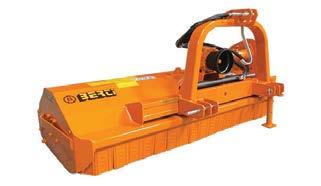
© Copyright 2021 Farmgard Ltd. All rights reserved. Specifications are subject to change without prior notice. CONTACT US NOW TO FIND OUT MORE. Berti offers the best mulcher for the finest mulch. They have double internal counter combs which reduce prunings to a very fine mulch. The finer the mulch, the less chance of disease. AN ALL ROUND FINE MULCHER. Get the finest mulch with the Berti orchard mulcher. CALL FARMGARD 24 HOURS 0 800 FARMGARD FIND OUT MORE AT farmgard.co.nz Nationwide Dealer Service Network 35 years, Generations of Experience
Charity group It’s Not About Us was set up by Alexandra man Peter Scarlet to give Vanuatuans a leg up after Cyclone Pam
Central Otago
Us to purchase new water pumps and other gear needed to help rebuild villages The ORCHARDIST : JUNE 2024 37 YOUR INDUSTRY
raised within
by It’s Not About

Securing trade deal with India not a simple feat
New Zealand foreign minister Winston Peters’ visit to India made headlines earlier this year – part of a flurry of diplomacy and research towards greater trade with India. But just how likely is a Free Trade Agreement with the world’s most populous country? HELENA O’NEILL talks with our Special Agricultural Trade Envoy Hamish Marr and industry leaders about horticulture’s future in India.
Horticulture hopes to be a key player in any trade deal with India, supplying counter-seasonal fruit and onions for a widening middle class by supplementing India’s own vast production. New Zealand’s horticulture sector (excluding wine) exports only about $40 million per year to India, compared to almost $1 billion to China. With India’s population, even just a small percentage increase in consumption would be a major boost to our horticulture revenue.
Fifth-generation mixed arable farmer Hamish Marr, of Methven, is the Special Agricultural Trade Envoy (SATE). He recently returned from a ten-day trade mission to India, touring five states.
The SATE role works alongside the government to support key objectives, communicating between growers, farmers and international importers to create the best possible relationship between growers, farmers and their international business partners.
“It was an eye-opening experience. I think we are going to have our work cut out for us in terms of a free trade agreement. We have to think about our size and what we have to offer India in terms of reciprocal trade. This is a country that has ambitions of its own.”
India is a standout high-tariff market. Tariffs into India are exceptionally high, averaging 42 percent on horticultural exports.
38 The ORCHARDIST : JUNE 2024 YOUR INDUSTRY
New Zealand’s Special Agricultural Trade Envoy Hamish Marr inspects a locally designed seed drill with New Zealand components during his recent trade mission to India
As a percentage of export value, this is the highest tariff burden of any market, and partially explains the narrow range of products exported to India.
“There is so much potential there; our companies and our producers are going to have to spend time in the market to understand what they need from us. It’s no use saying we’ve got a lot of lovely apples and you need them: they have many varieties of their own.”
Companies, growers and producers will have to invest a significant amount of time in India to work out how we can be of assistance to India and find those ‘beneficial and mutual solutions’ to existing problems.
EXPORTS TO INDIA
In terms of horticulture, NZ Horticulture Export Authority (HEA) chief executive Simon Hegarty says exports to India over the period 2020 to 2024 (year to date) have fluctuated ranging from approximately NZ $40 million (in 2023) up to a high of $70m (in 2021).
“The two leading items are apples with approximately 80 percent of the value, and kiwifruit at 15 percent. Other products making up the remaining five percent that have been exported there in recent years are avocados, dried peas, cherries and onions.”
Tariffs into India are exceptionally high, averaging 42 percent on horticultural exports
Simon says there are currently high tariffs on most products, ranging between 30 percent and 50 percent, which is the main barrier to entry.
Other barriers include additional labelling requirements pre-export, or specific phytosanitary measures for particular products. Onions, for example, are required to undergo methyl bromide fumigation. This treatment is considered by India to prevent multiple pests and diseases including onion smut, dry rot, stem and bulb nematode, and onion maggot.
“A free trade agreement would need to eliminate the tariffs and provide a mechanism for promptly addressing phytosanitary issues of concern to either country. New Zealand’s trade profile which is dominated by a range of pastoral sector products –like dairy and meat – will make it difficult to negotiate a free trade agreement with India.”
The substantial population imbalance is an obvious mismatch in terms of our appeal as a valuable trading partner, Simon says.
“However, New Zealand has expertise and proven systems, particularly in relation to food production, that could benefit India. The New Zealand agritech sector in particular is well-placed to add value to an enhanced trading partner relationship.”
In 2022, in terms of New Zealand export earnings, India was the ninth-ranked market for apples and the twelfth-ranked market for kiwifruit.
“These may have taken a hit in 2023 due to weather events, however, these are expected to lift in 2024 and beyond. As the world’s most populous country, India has its own vast food production sectors that it will be seeking to develop,” Simon says.
Hamish says kiwifruit seems to be growing in popularity in India.
Frost Protection







0800 735 859 www.bdmax.co.nz See the website for HortResearch report 10264 & 9 years of grower experience. Available from Farmlands & Horticentre. Excellent results to -2°C ThermoMax • Provides internal warming more compact flowering • For use on fruit tree crops
The “spray on” that adds to all other methods
Good results have been achieved when applied through irrigation lines
•
•
80% apples 15% kiwifruit 2021 2023 $70m $40m The ORCHARDIST : JUNE 2024 39 YOUR INDUSTRY
“We hear that the country is desperate for kiwifruit in general; it’s seen as a health food. While in the north we were told that growers of apples and stonefruit were rapidly taking orchards out and replacing them with kiwifruit.”
The average size of an orchard in India is 0.9 hectares, which is just enough to support a family and no more.
“We had a fascinating trip to a family in the hills in really steep country, there was no way you could drive on it. Very steep country that they had terraced by hand. They had been growing plum trees for about six generations. They had cut them all down and put kiwifruit in. They had made all the trellising themselves. The young guy doing it was a part-time computer programmer and got all the information [about growing kiwifruit] from YouTube.”
Hamish says that the family were desperate for the Kiwi contingent to show them how to prune the vines correctly –a skill none in the delegation possessed.
One of the main things Hamish learned in India is how important building relationships is.
“It’s not going to be easy. Personal exchanges between India and New Zealand to upskill people could be a real opportunity to build that relationship.”
Skills or research and development exchanges are real possibilities to ‘get a foot in the door’.
The family were desperate for the Kiwi contingent to show them how to prune the vines correctly
Hamish says that Zespri is doing great work in India and has the potential to open the door for other New Zealand sectors through its relationships across the country.
Zespri has been operating in India for 11 years, with around $20 million in sales of Zespri kiwifruit.
Zespri head of global public affairs Michael Fox says like many New Zealand primary sector exporters, Zespri sees India as a strategic market for future growth, with demand for kiwifruit strong and increasing.
“Demand for Zespri kiwifruit in India is strong, driven by an increasingly health-focused consumer base as well as the rise in snacking, and support for brands which align with the values of consumers.
“We are investing in India, building partnerships with supply chain partners and working with local retailers. However, we are constrained from realising India’s demand potential by the 33 percent tariff we pay on New Zealand kiwifruit.”
Michael says that global demand exceeds supply for Zespri kiwifruit.

“Each year we allocate fruit to markets based on the need to optimise returns to our growers, while also investing in new markets. While prices in India on their own are relatively competitive given the value consumers see in our product, the market returns are not competitive with our top markets because of the tariff.
“We’re working with the government and partners to explore opportunities to strengthen trade with India. India presents a huge opportunity and it’s great to see real momentum with the relationship recently,” Michael says.
Simon says that negotiations for trade agreements between India and New Zealand already have a long history.
“Bilateral negotiations between New Zealand and India actually commenced in 2010, however reached a hiatus in 2015. India has 13 agreements in effect spanning a range of bilateral or plurilateral partners. One of the more recently completed was the India-Australia Economic Cooperation and Trade Agreement (IndAus ECTA) that entered into force in December 2022.”
In that agreement, Australia agreed to eliminate 100 percent of its tariff lines on trade with India, while India agreed to remove 90 percent of its tariff lines on trade from Australia.
“Clearly, India has sectors that it regards as sensitive and will seek to retain tariff protections for. India is currently actively negotiating with the United Kingdom, Canada, European Union and Israel to conclude agreements.”
Hamish says that while the opportunity for New Zealand is there, it won’t be a simple process.
40 The ORCHARDIST : JUNE 2024 YOUR INDUSTRY
A newly planted kiwifruit orchard on very steep, manually terraced land, designed off YouTube
“I think there’s a market for everything there. But logistics is a problem from the cool chain, and sanitary conditions to roading.”
Hamish says QualityNZ is a great example of a company working hard in the Indian market and making a difference.
QualityNZ was founded in 2012 by a small team of passionate New Zealanders keen to bring the country’s finest quality products and services to the burgeoning Indian market. On its website, the company states that the size and complexity of the market have traditionally been difficult for New Zealand businesses to navigate.
The company says it has extensively researched the market and developed a unique business model ensuring direct consumer contact, superior service and quality control at every step.
“They’ve got a relationship in the market and they’re doing good work,” Hamish says.
QualityNZ also draws on India’s love of cricket, with its patron Sir Richard Hadlee joined by fellow cricketer and company ambassadors Stephen Fleming, Brendon McCullum and Daniel Vettori who are also shareholders. The company says its cricketing connections play an important role in the marketing and promotion of QualityNZ products and services.














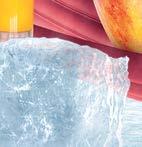





























 Special Agricultural Trade Envoy Hamish Marr presents one of his hosts in Assam with a book
Special Agricultural Trade Envoy Hamish Marr presents one of his hosts in Assam with a book
The ORCHARDIST : JUNE 2024 41 YOUR INDUSTRY






































 Gary Singh Sanger checks on gold kiwifruit at his orchard near Waiau Pā, southwest of Auckland
Gary Singh Sanger checks on gold kiwifruit at his orchard near Waiau Pā, southwest of Auckland











 Labour market advisor Tracey Harrison helps New Zealanders find seasonal work in horticulture
Labour market advisor Tracey Harrison helps New Zealanders find seasonal work in horticulture
























































































































 Special Agricultural Trade Envoy Hamish Marr presents one of his hosts in Assam with a book
Special Agricultural Trade Envoy Hamish Marr presents one of his hosts in Assam with a book